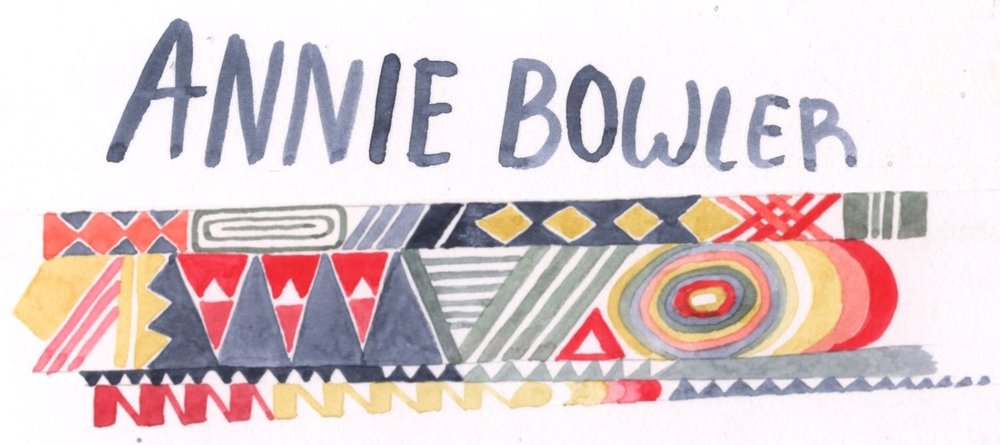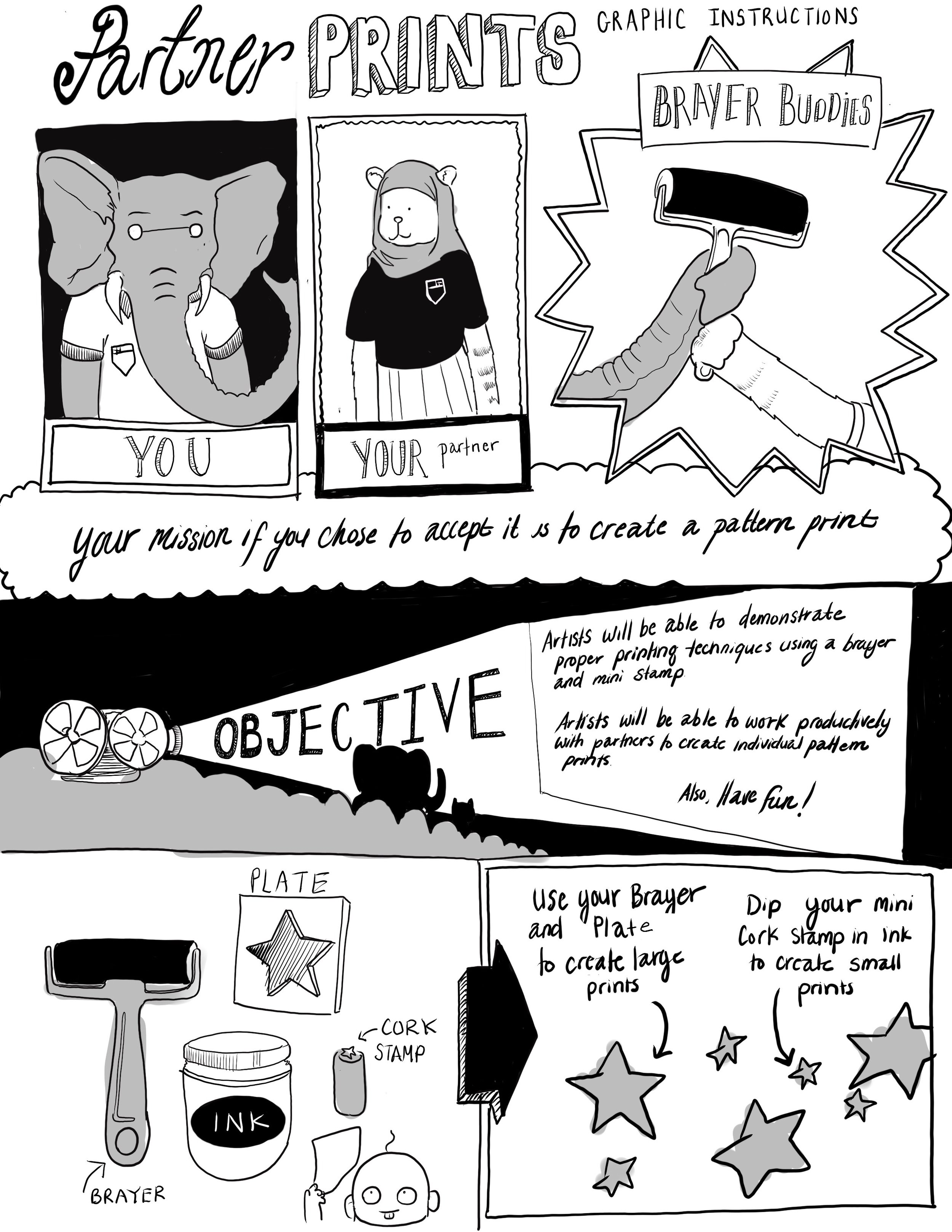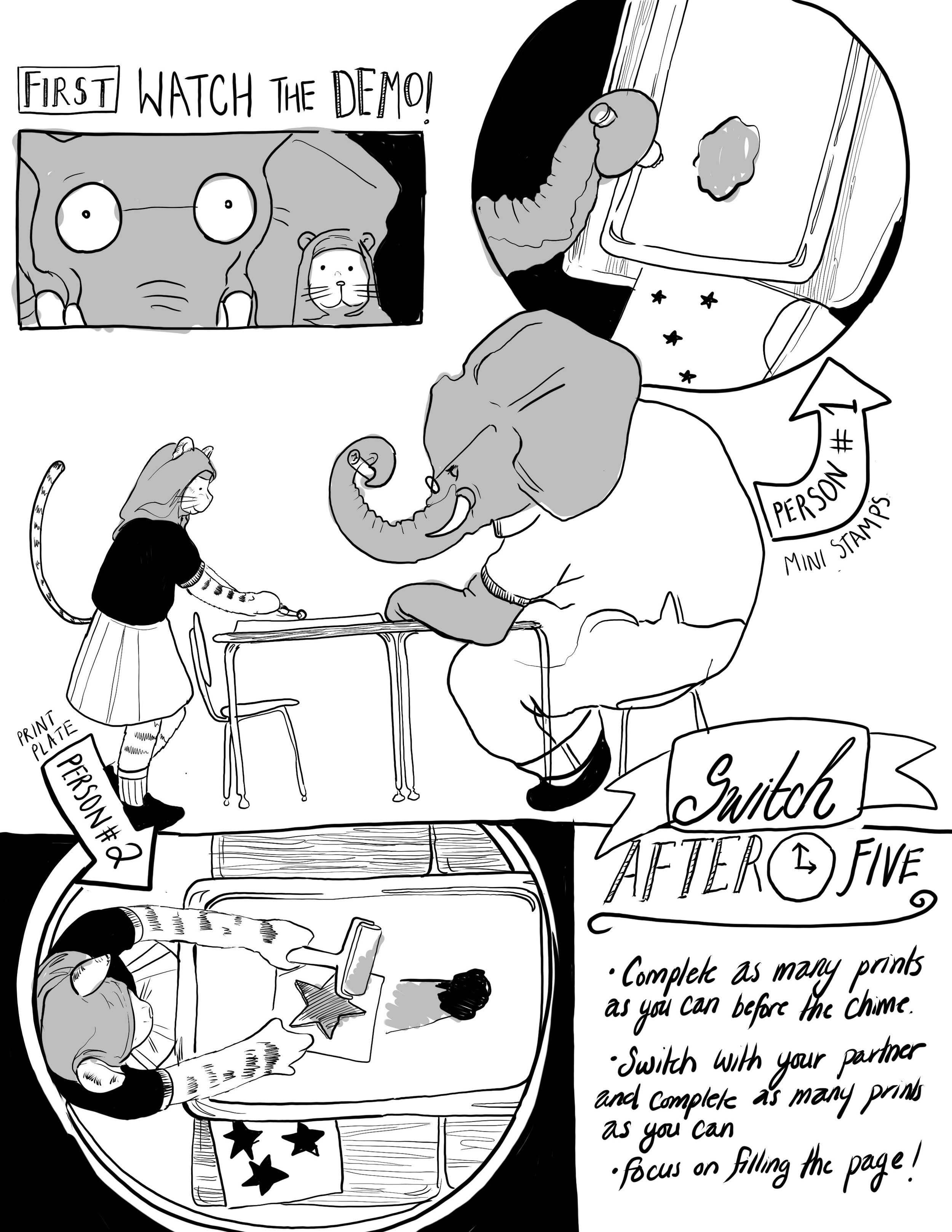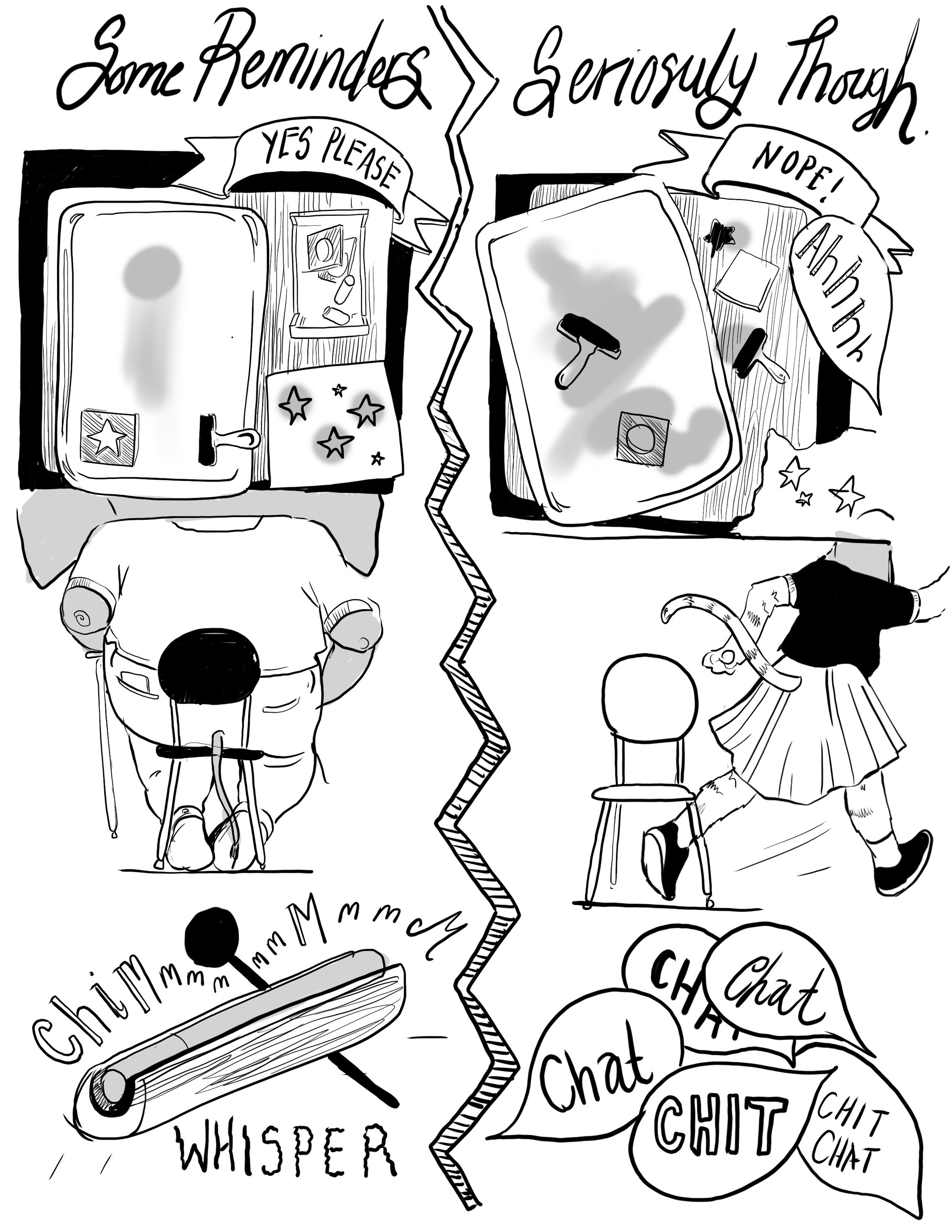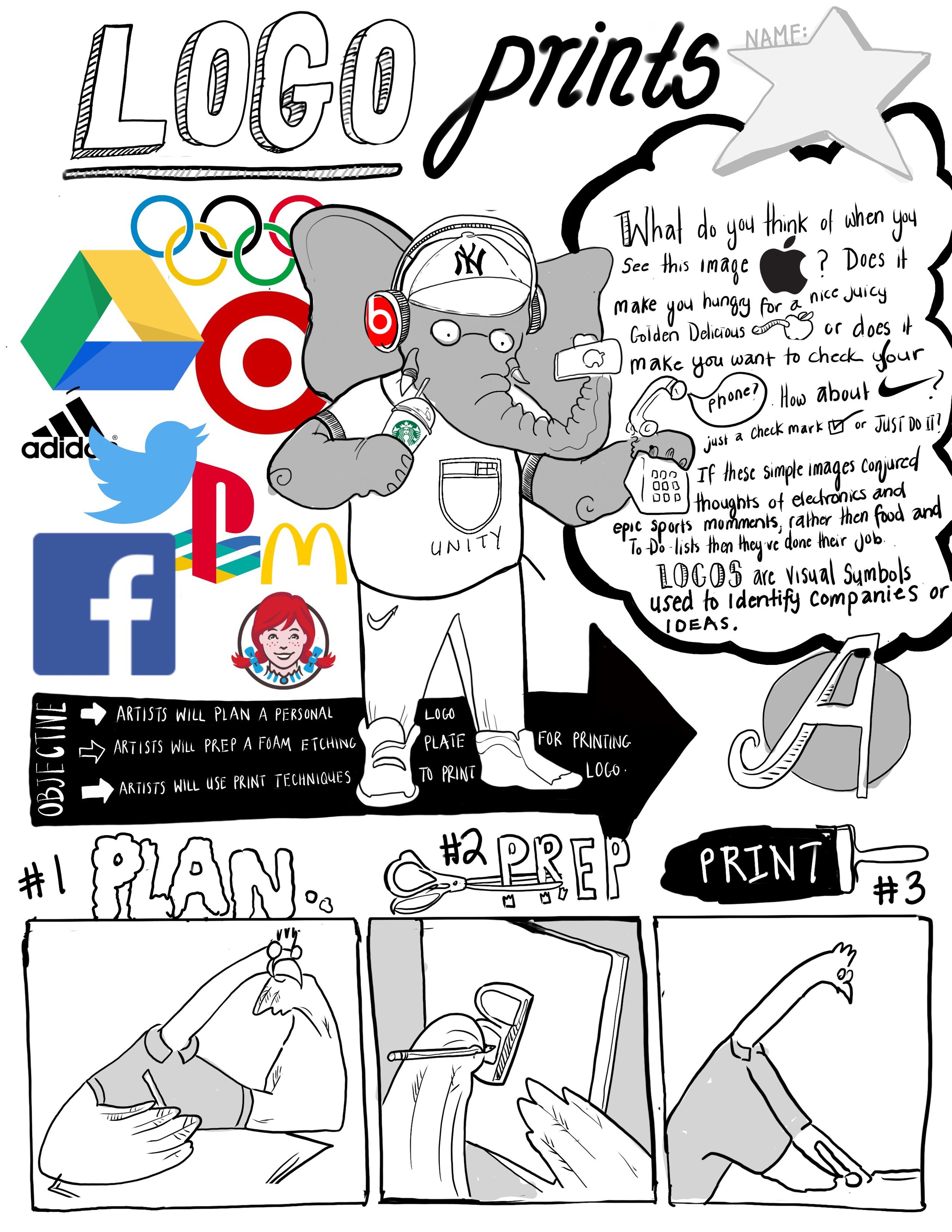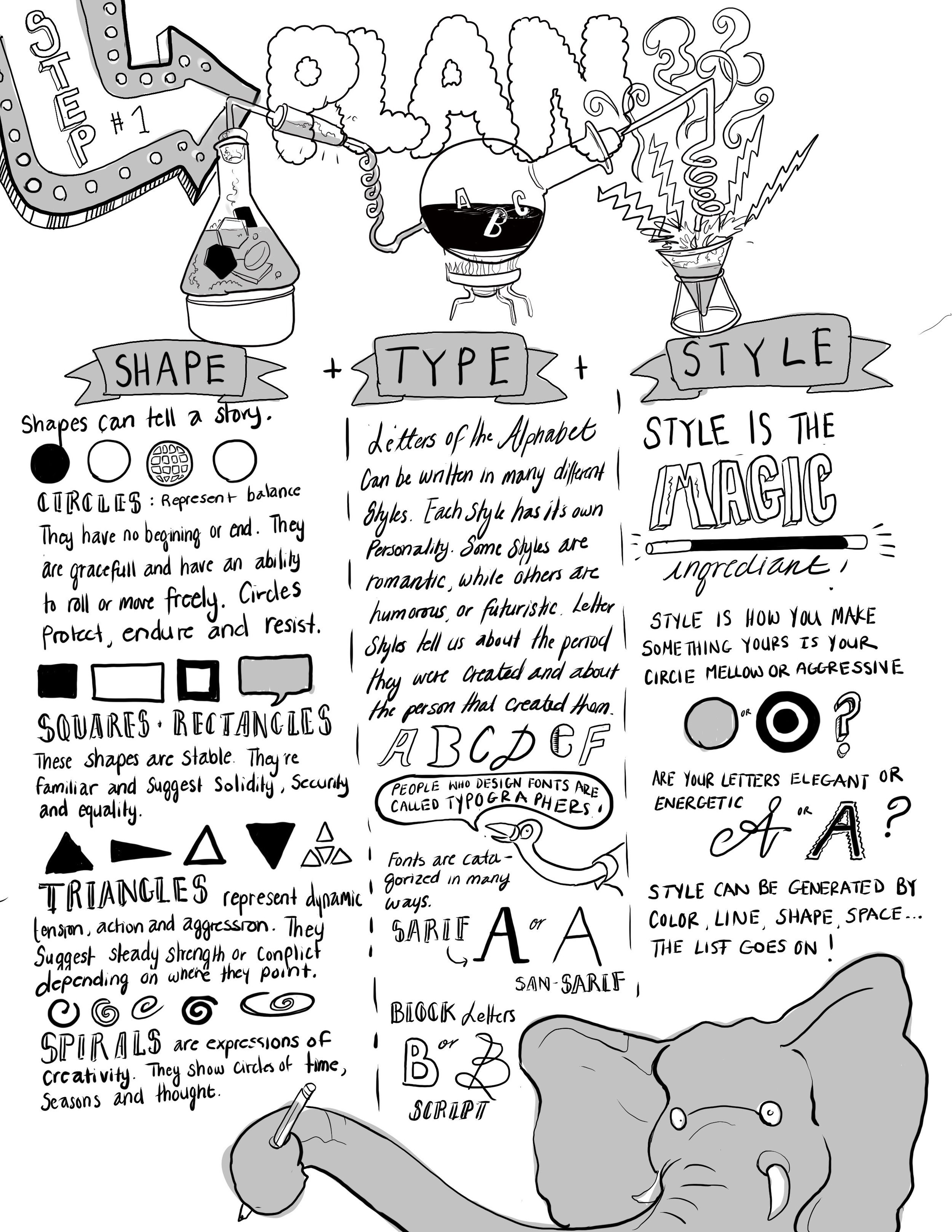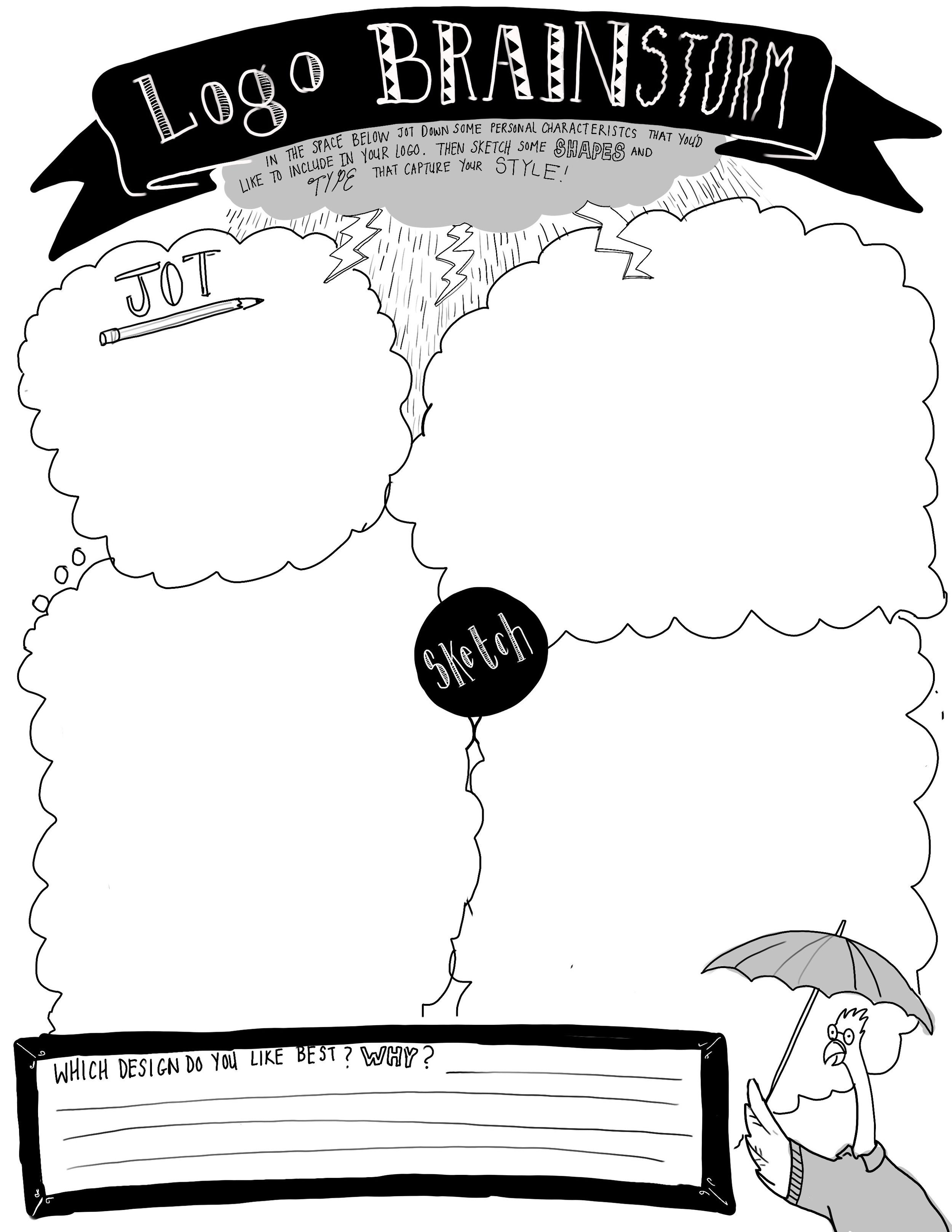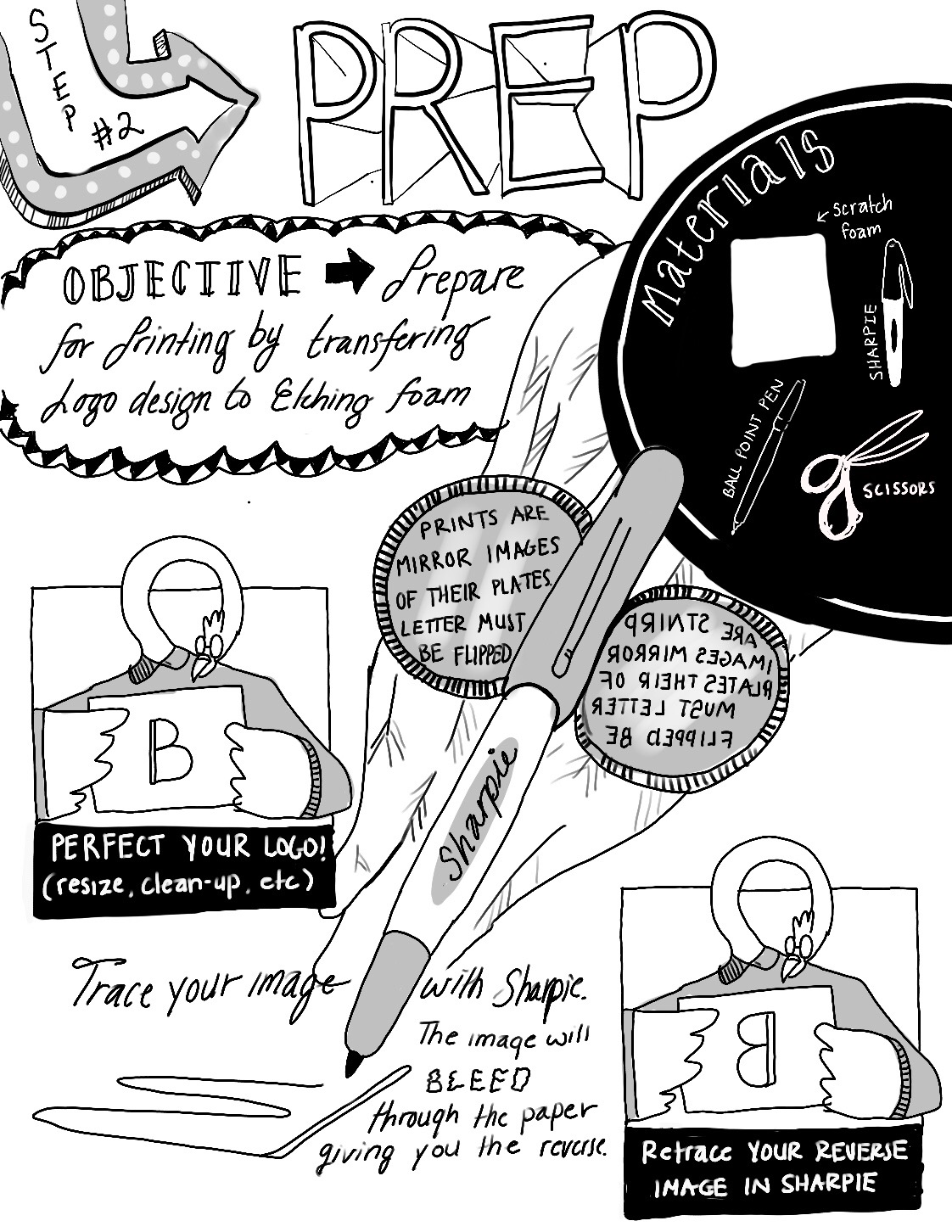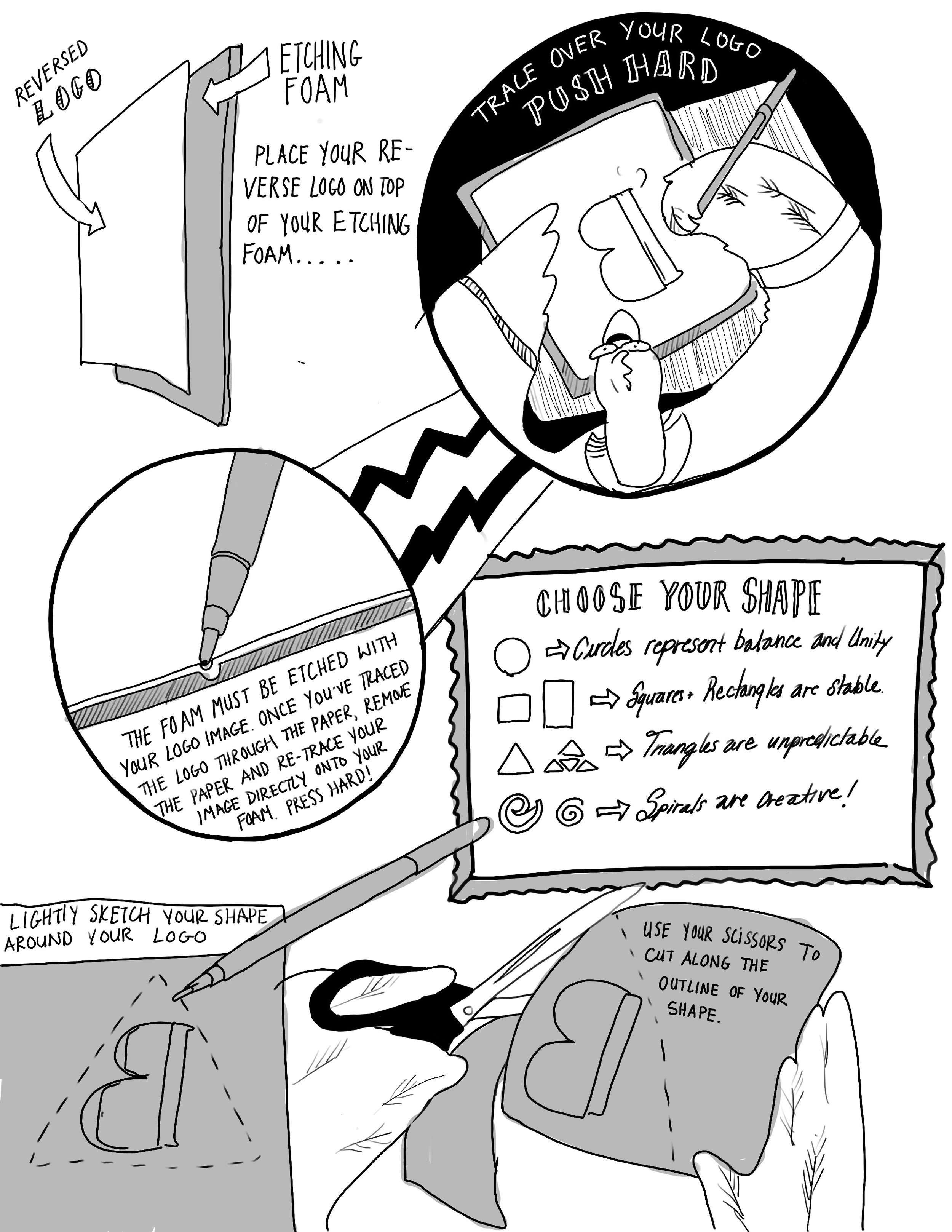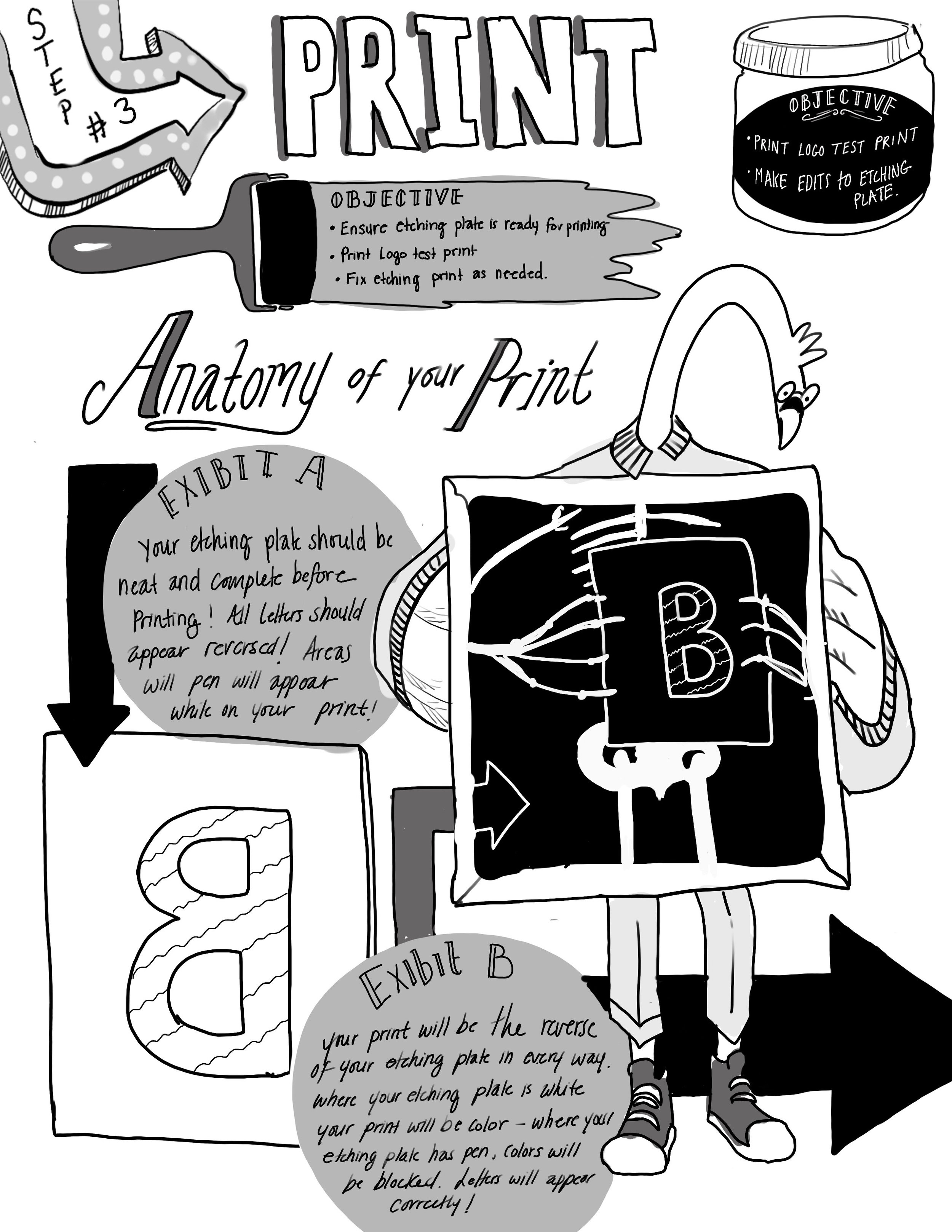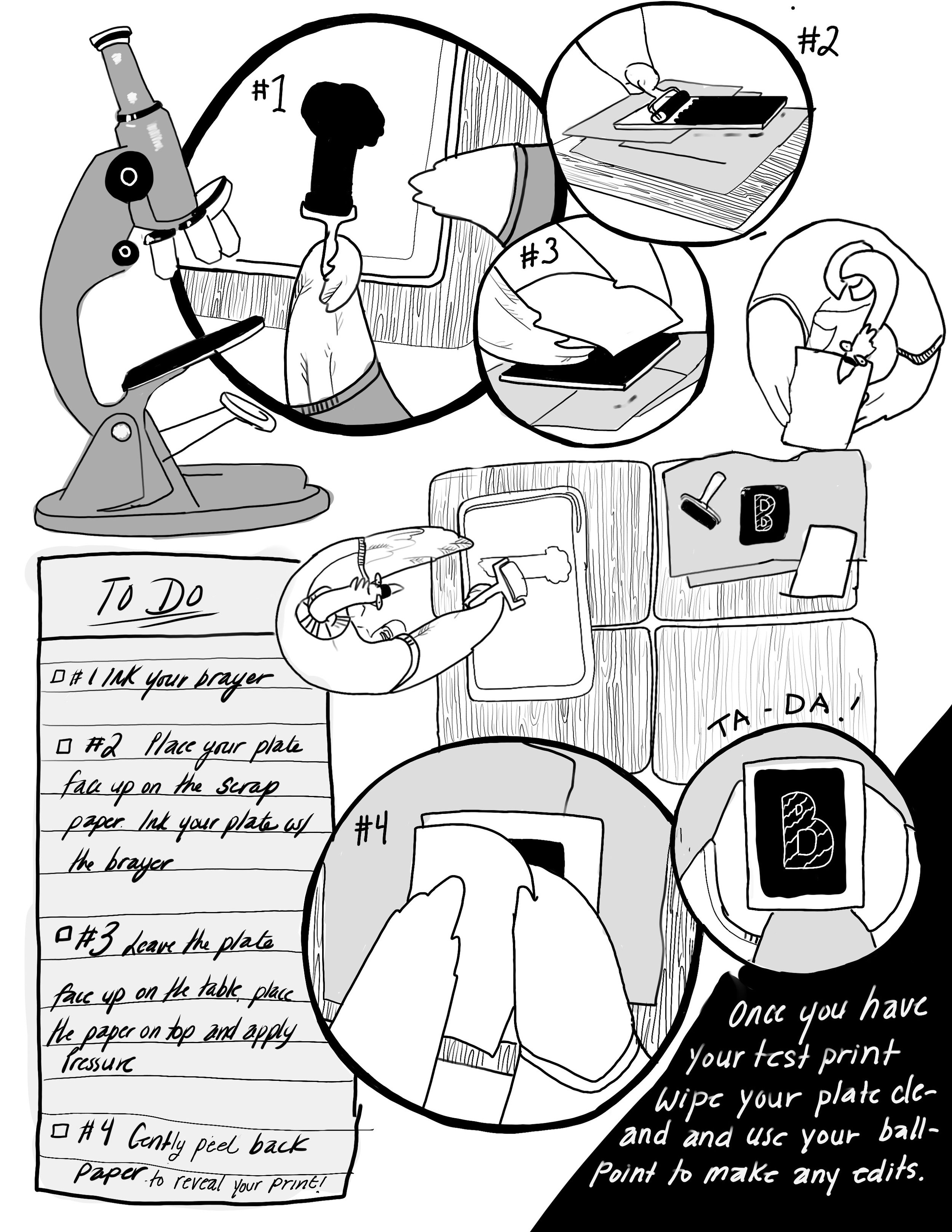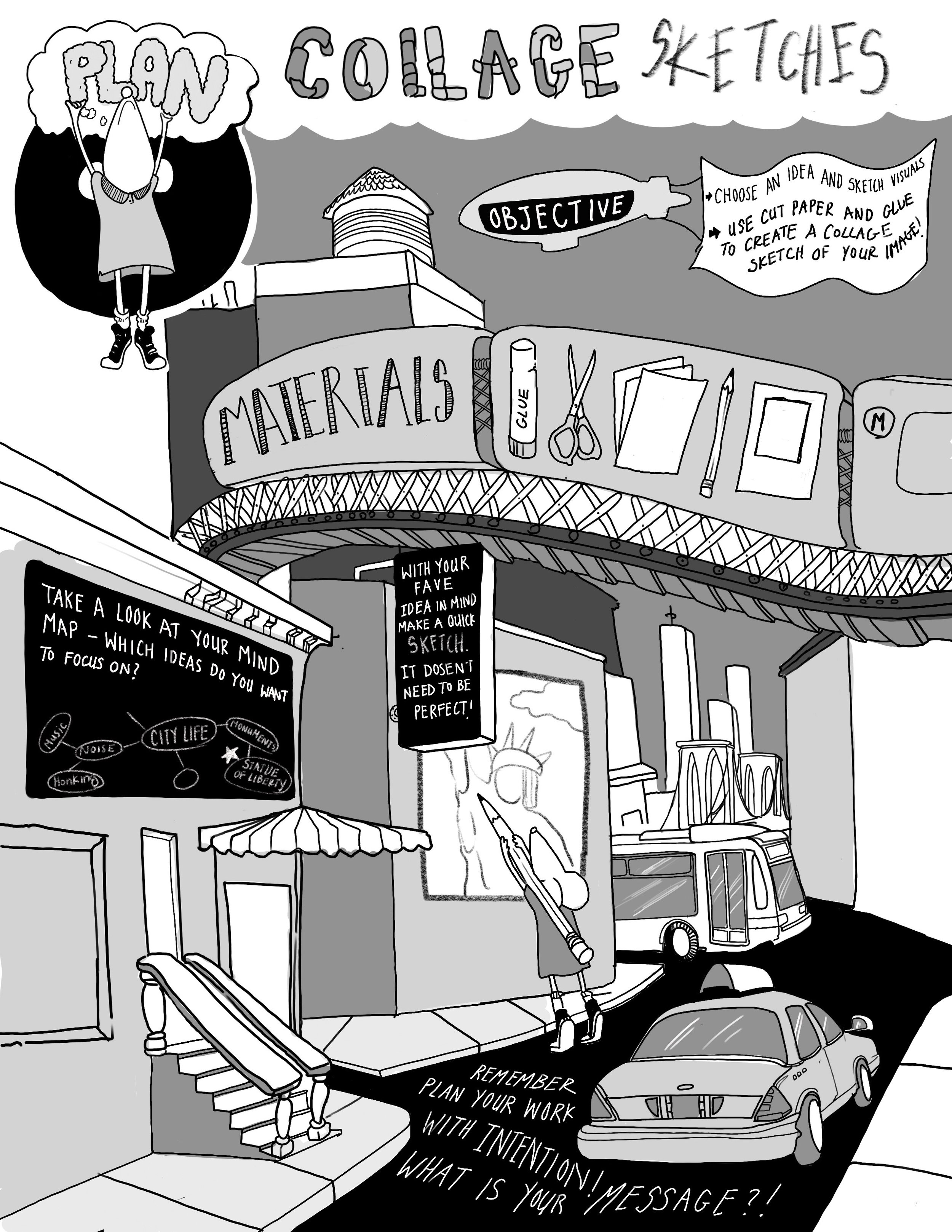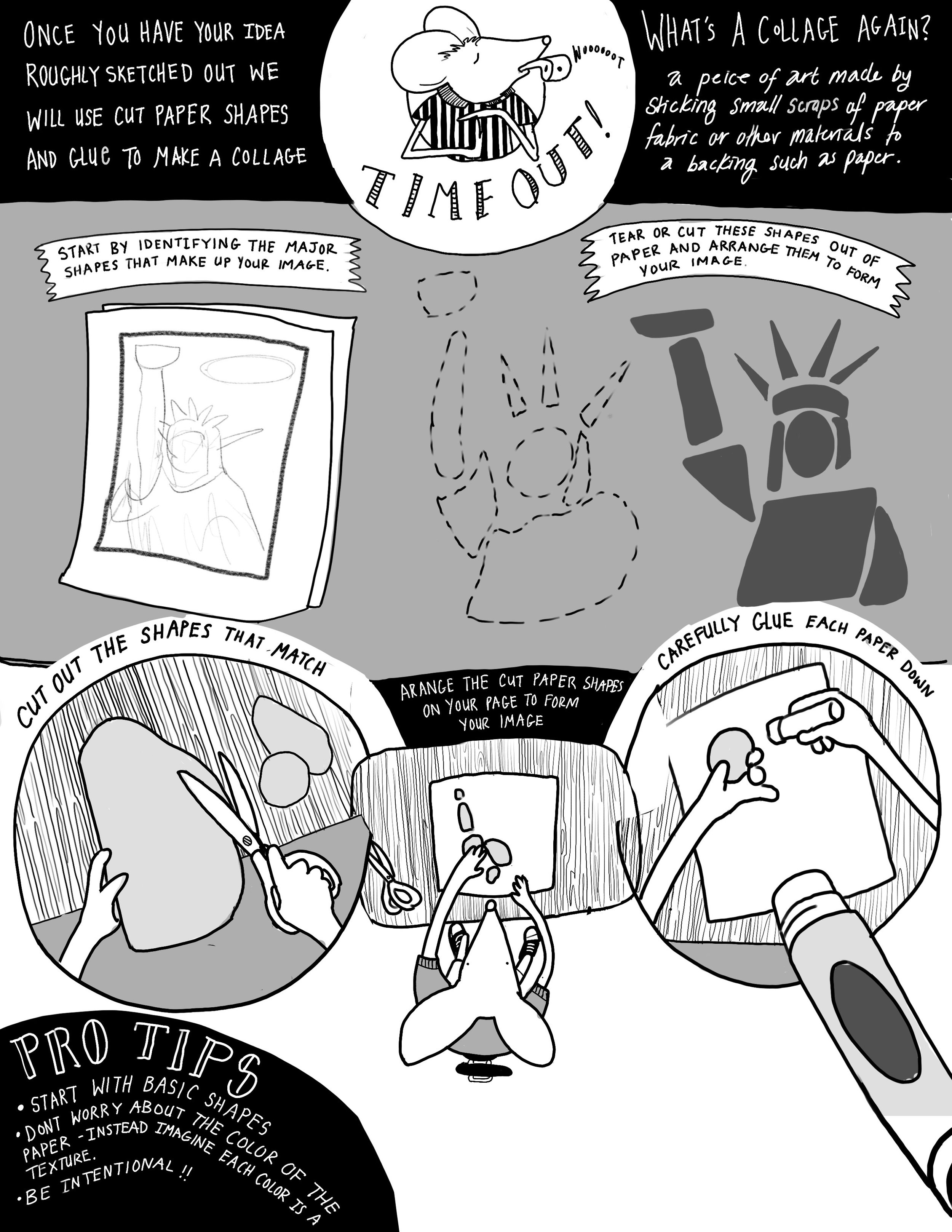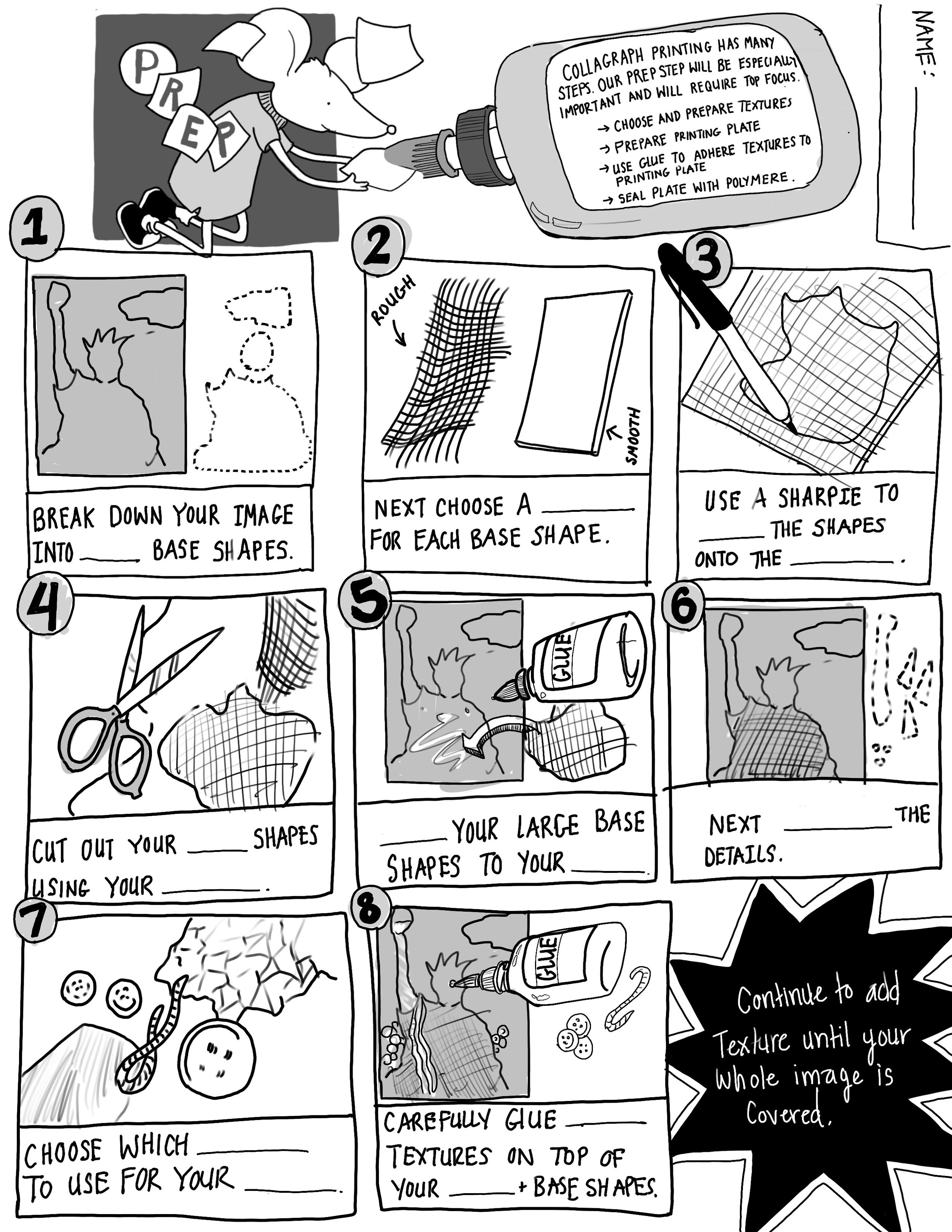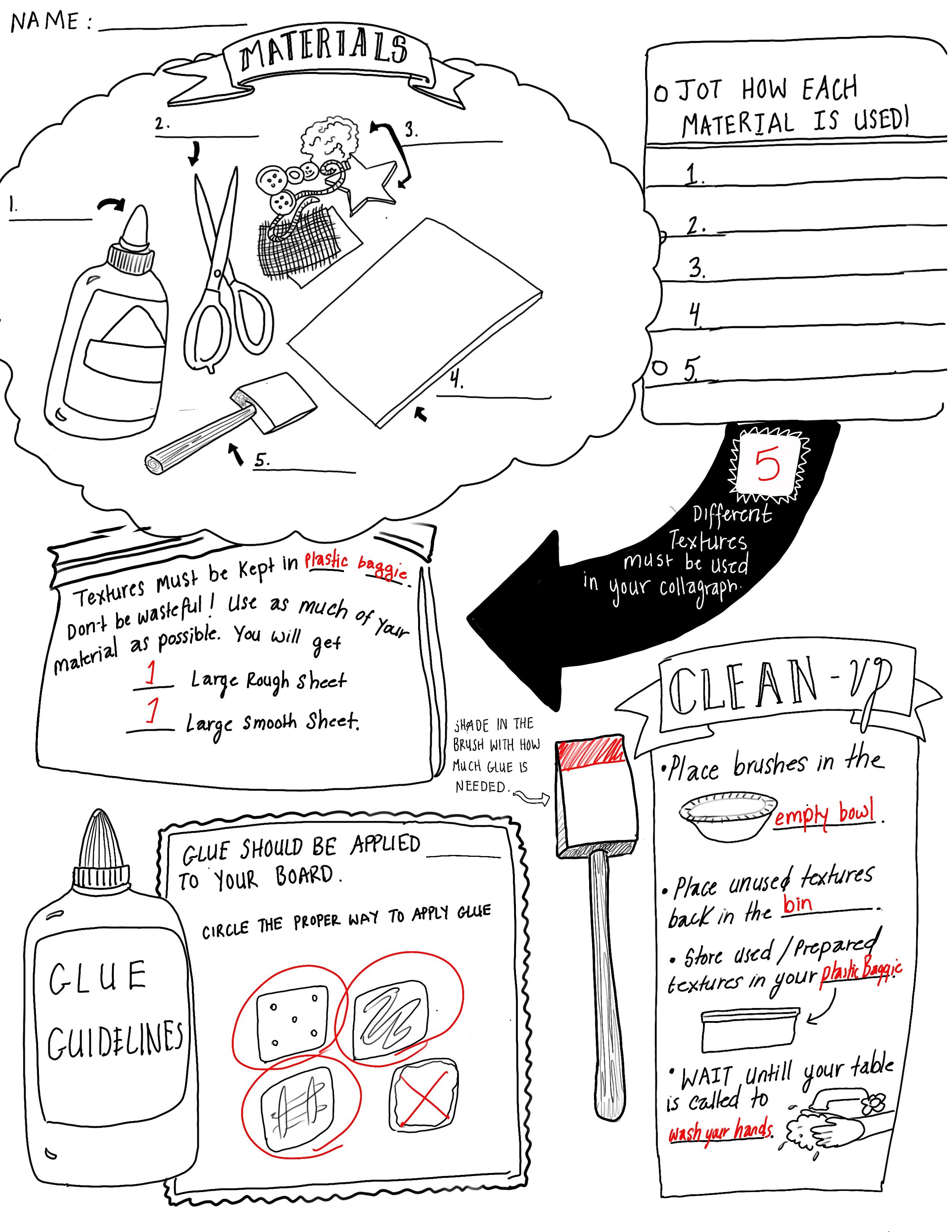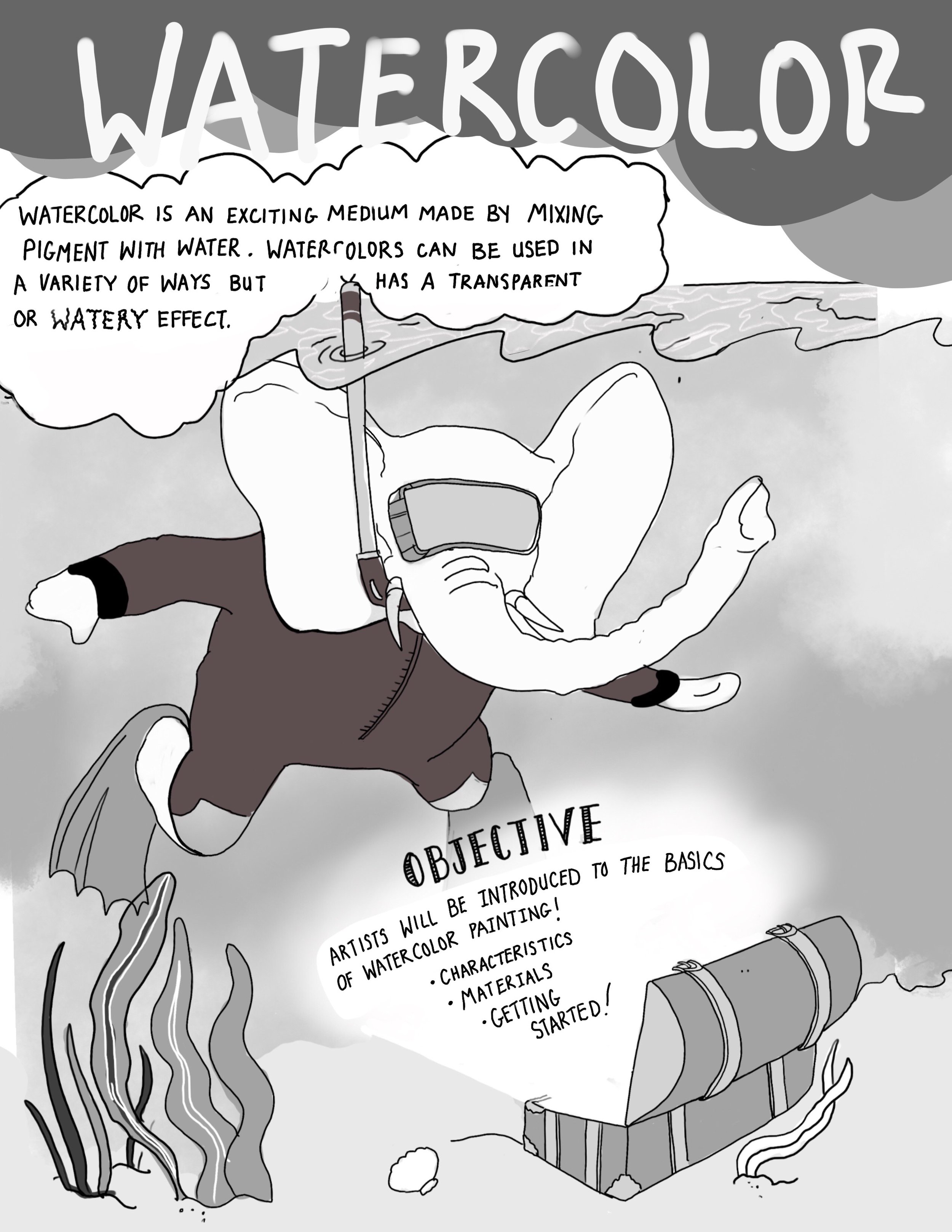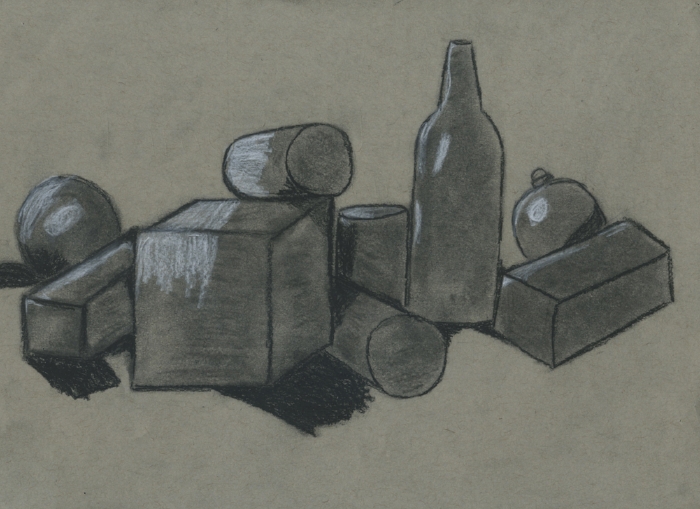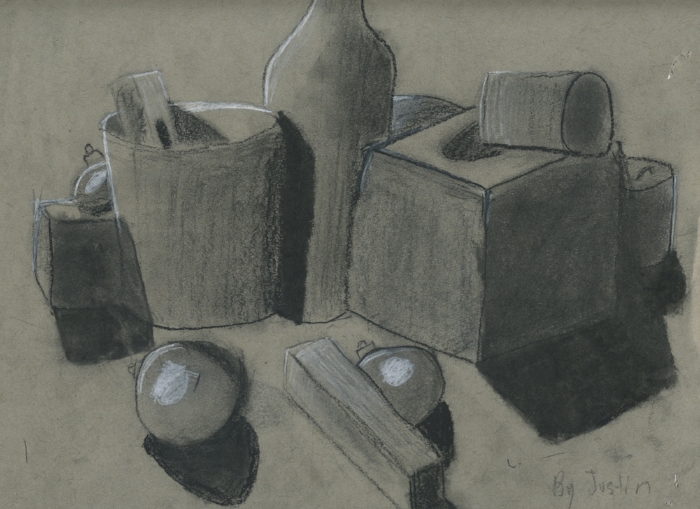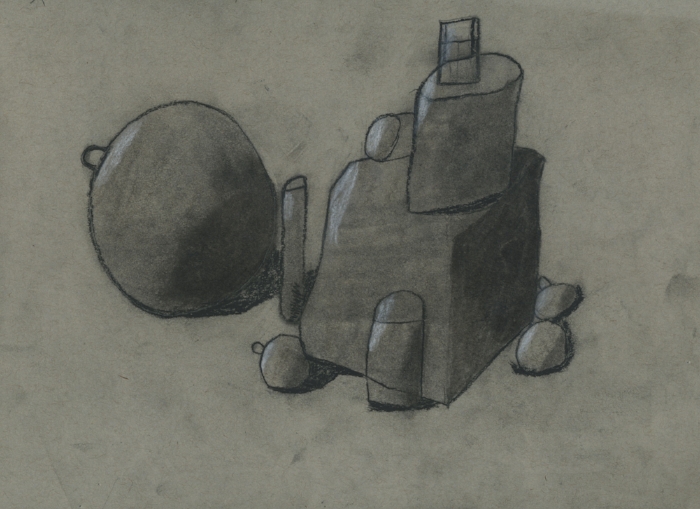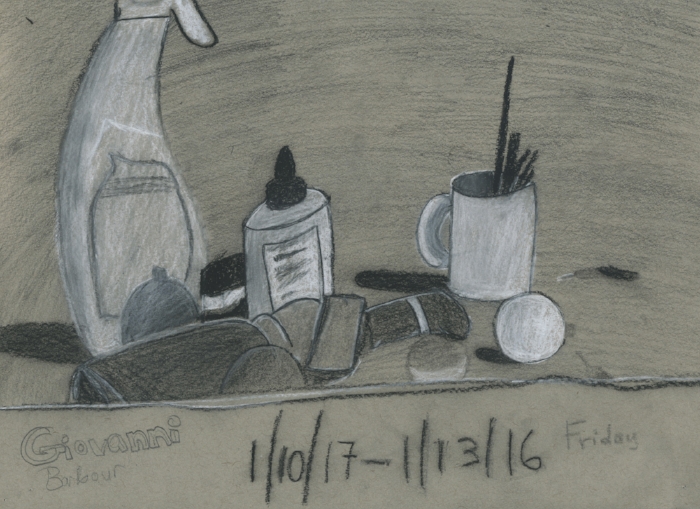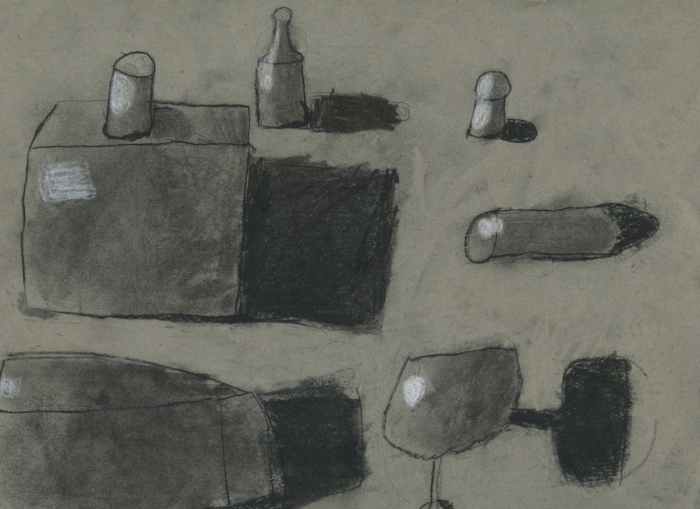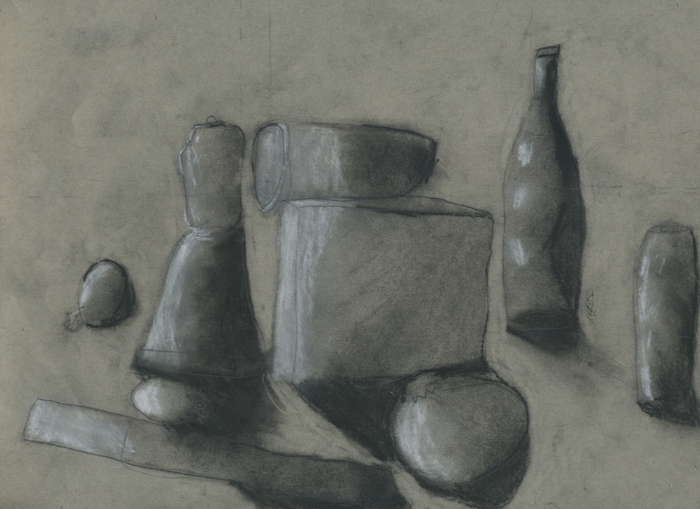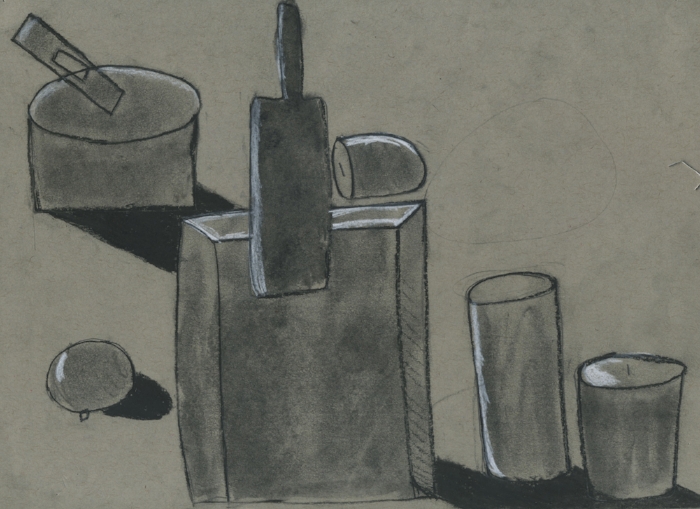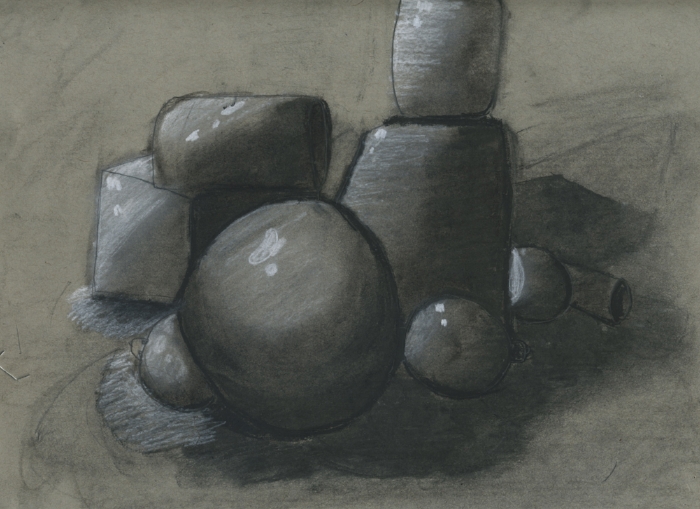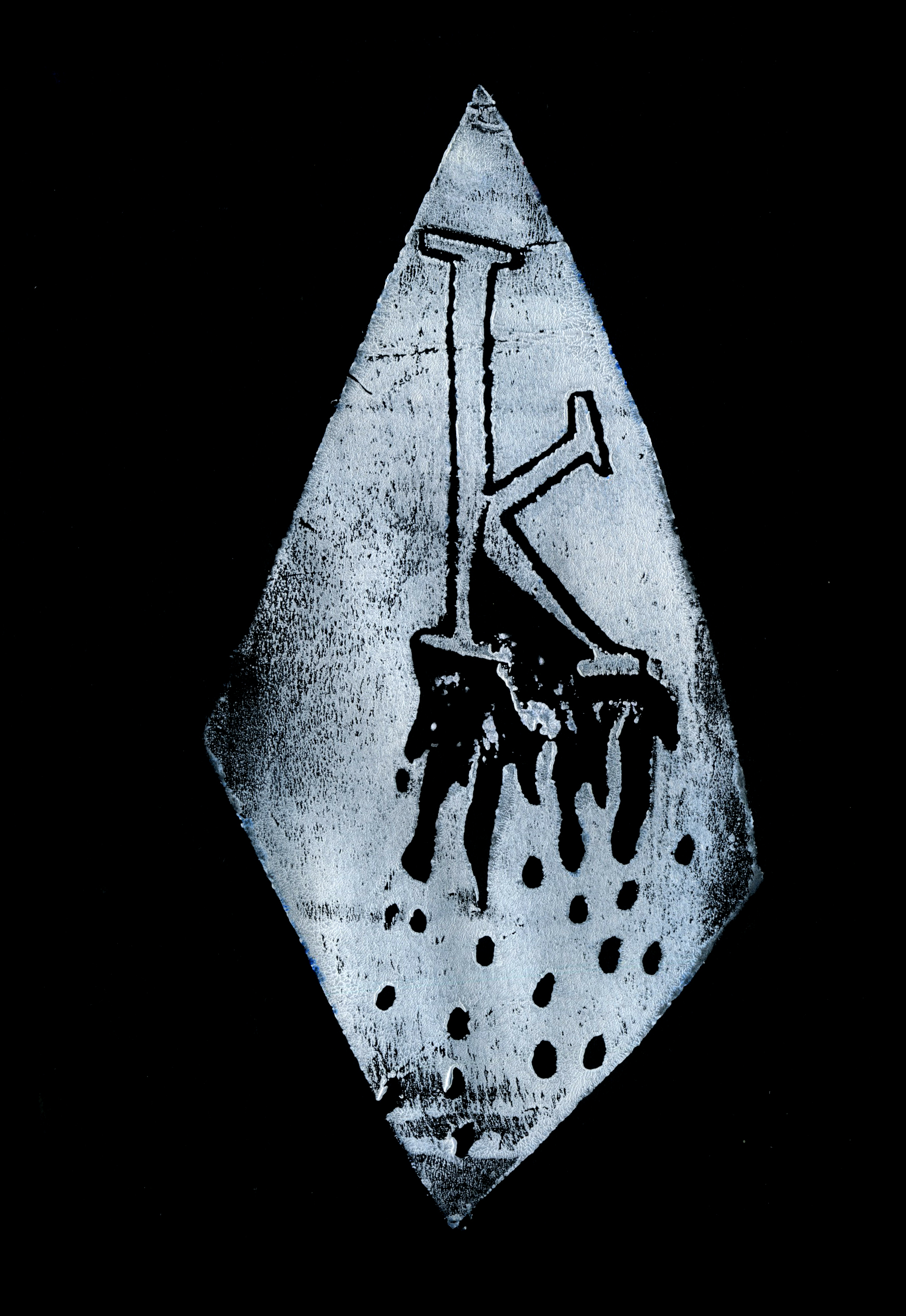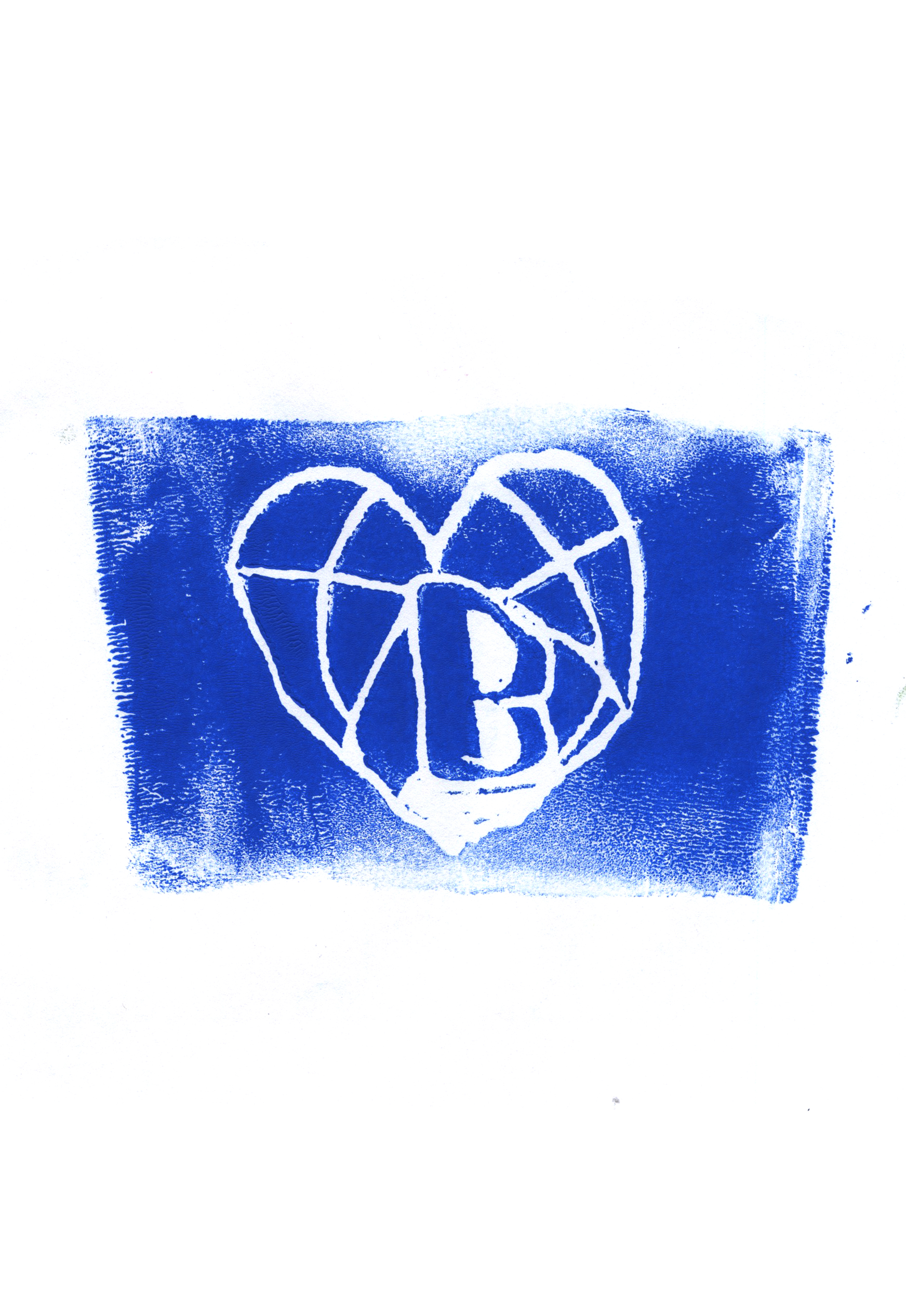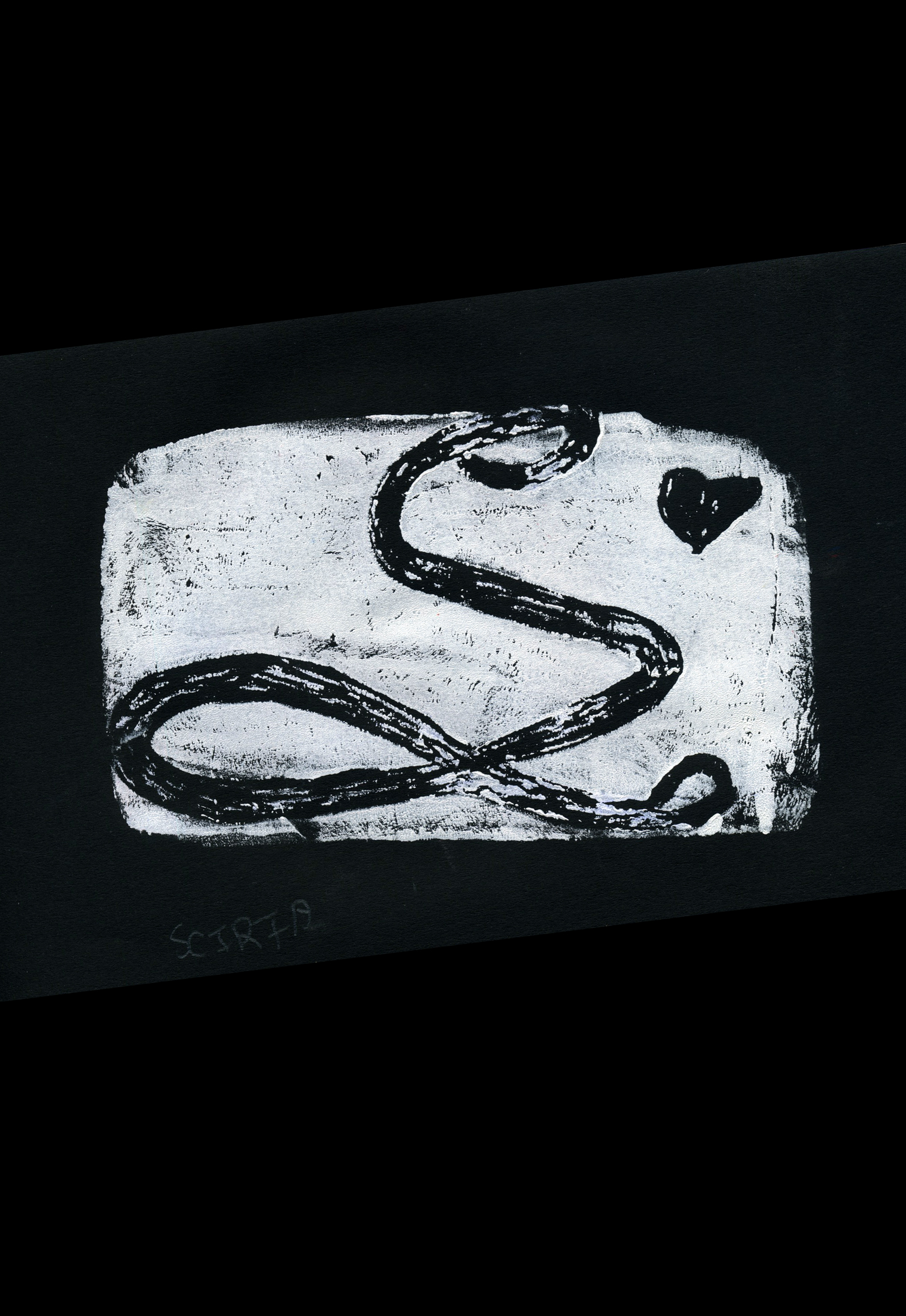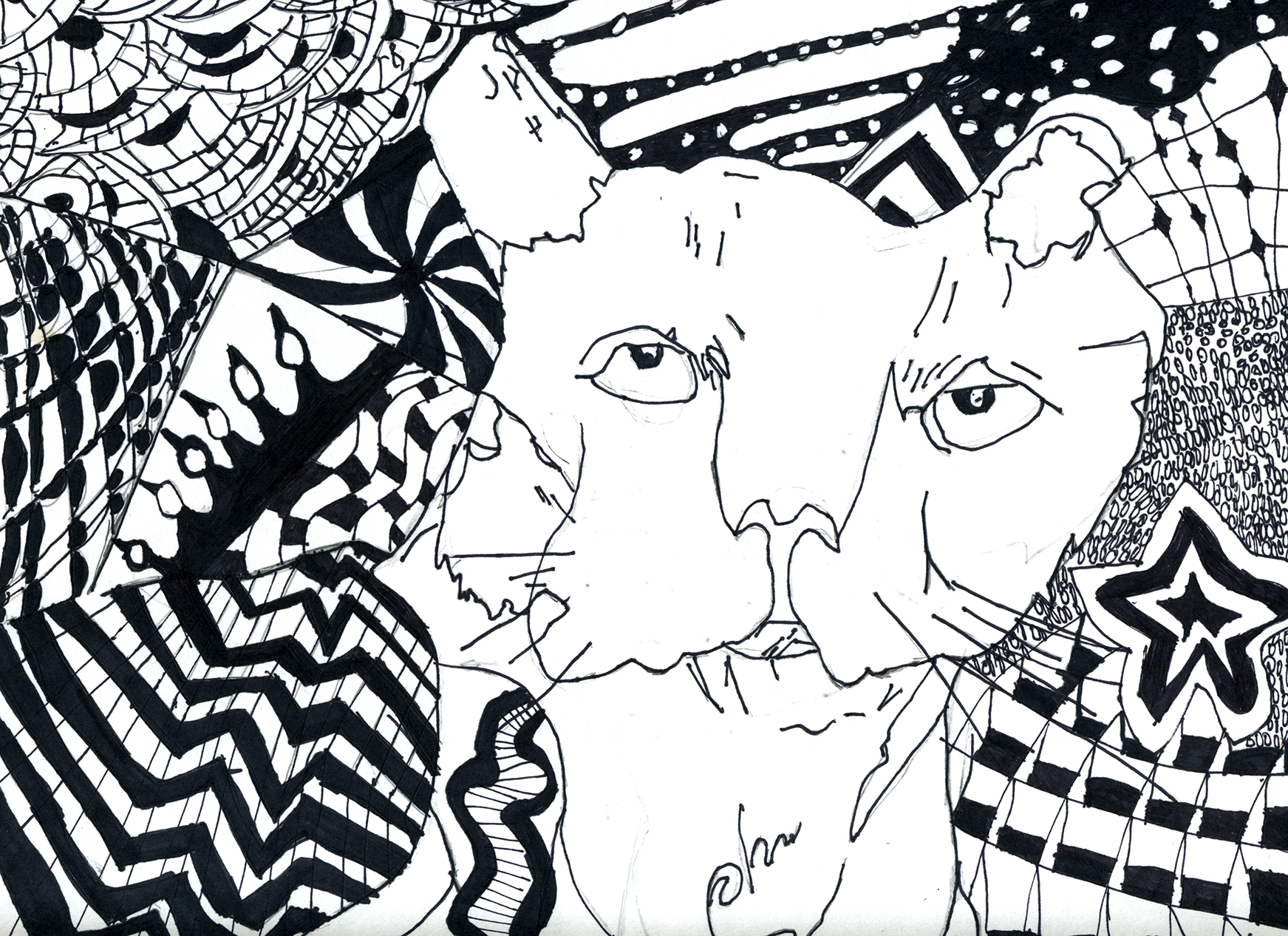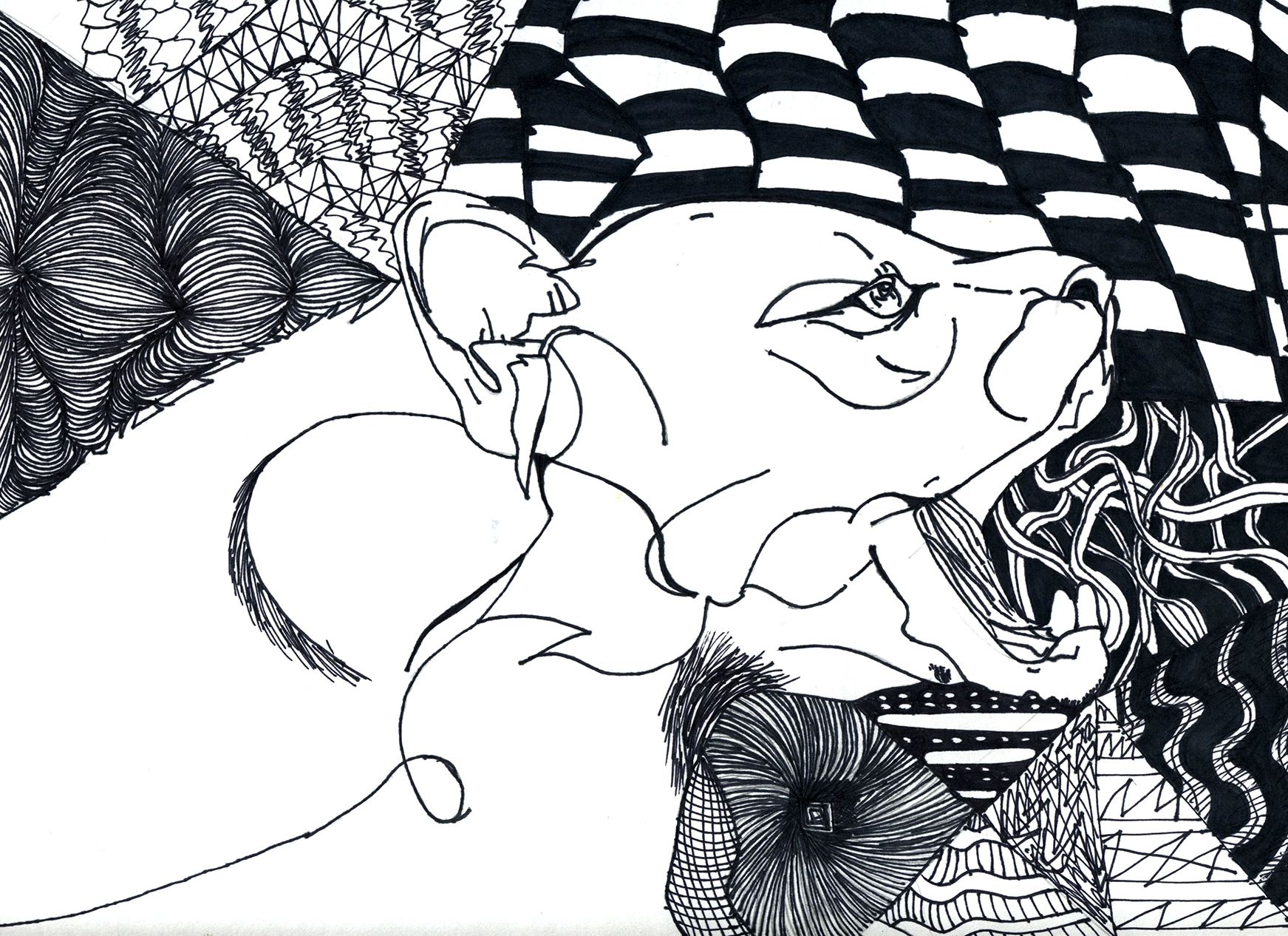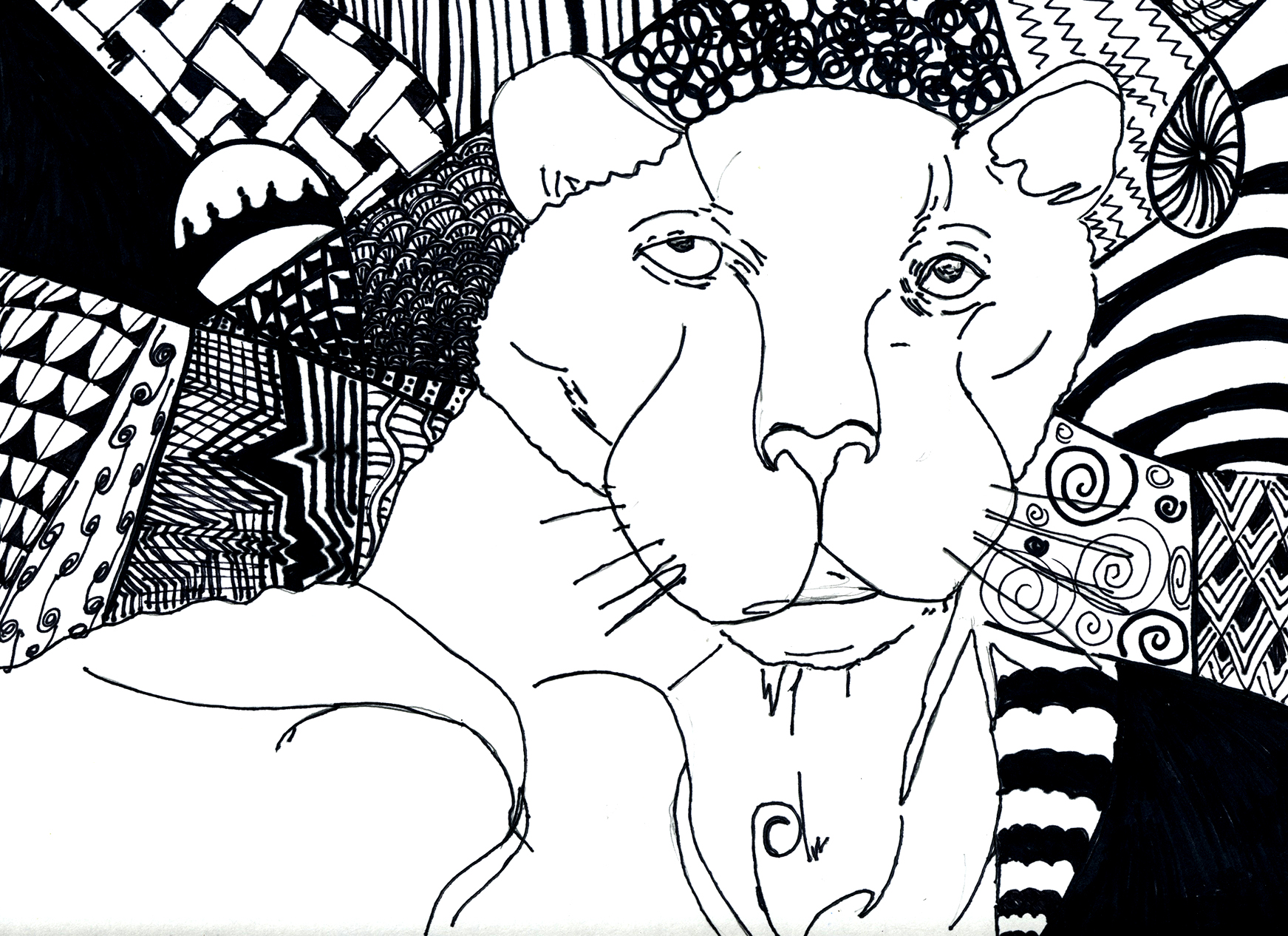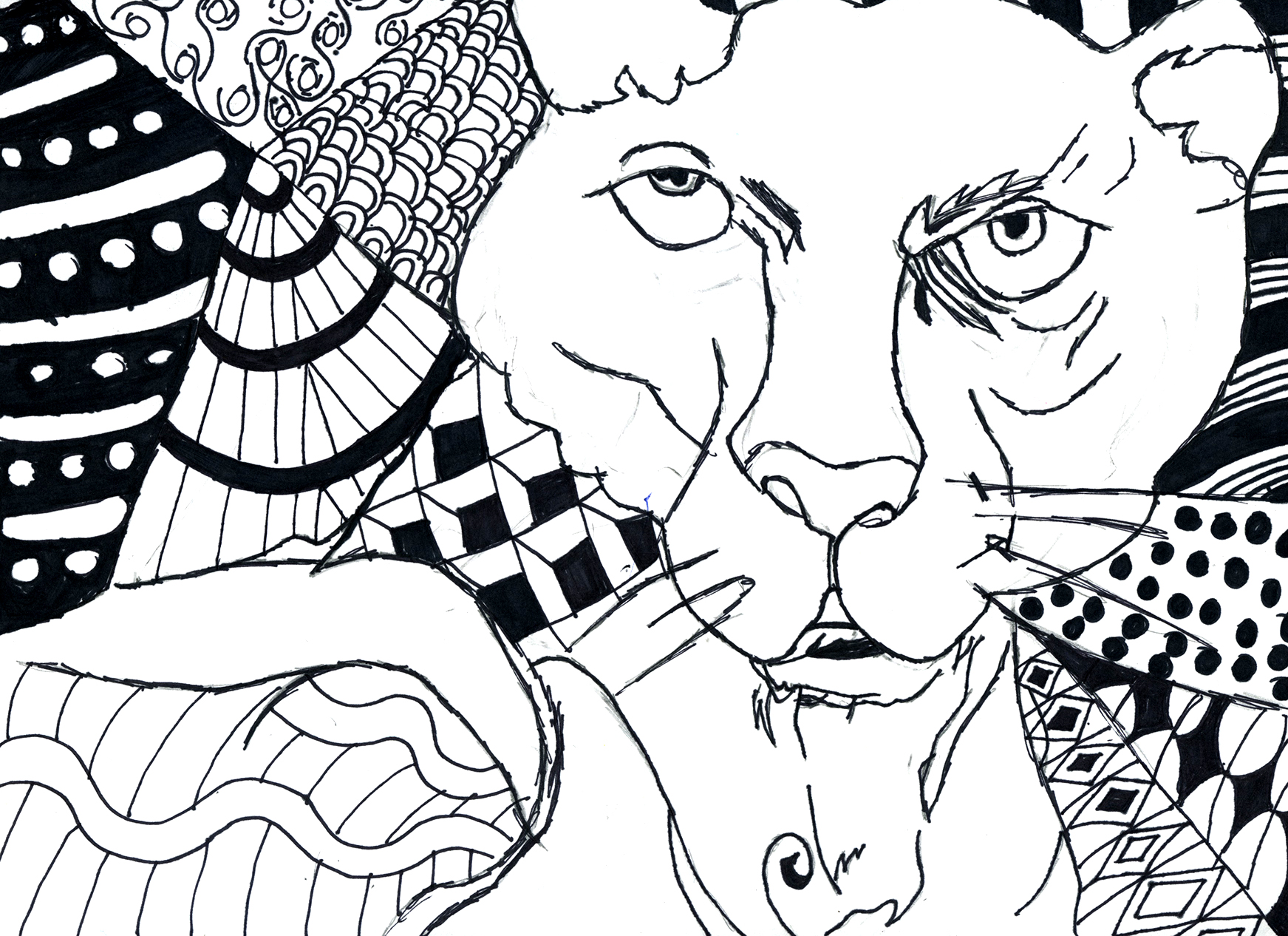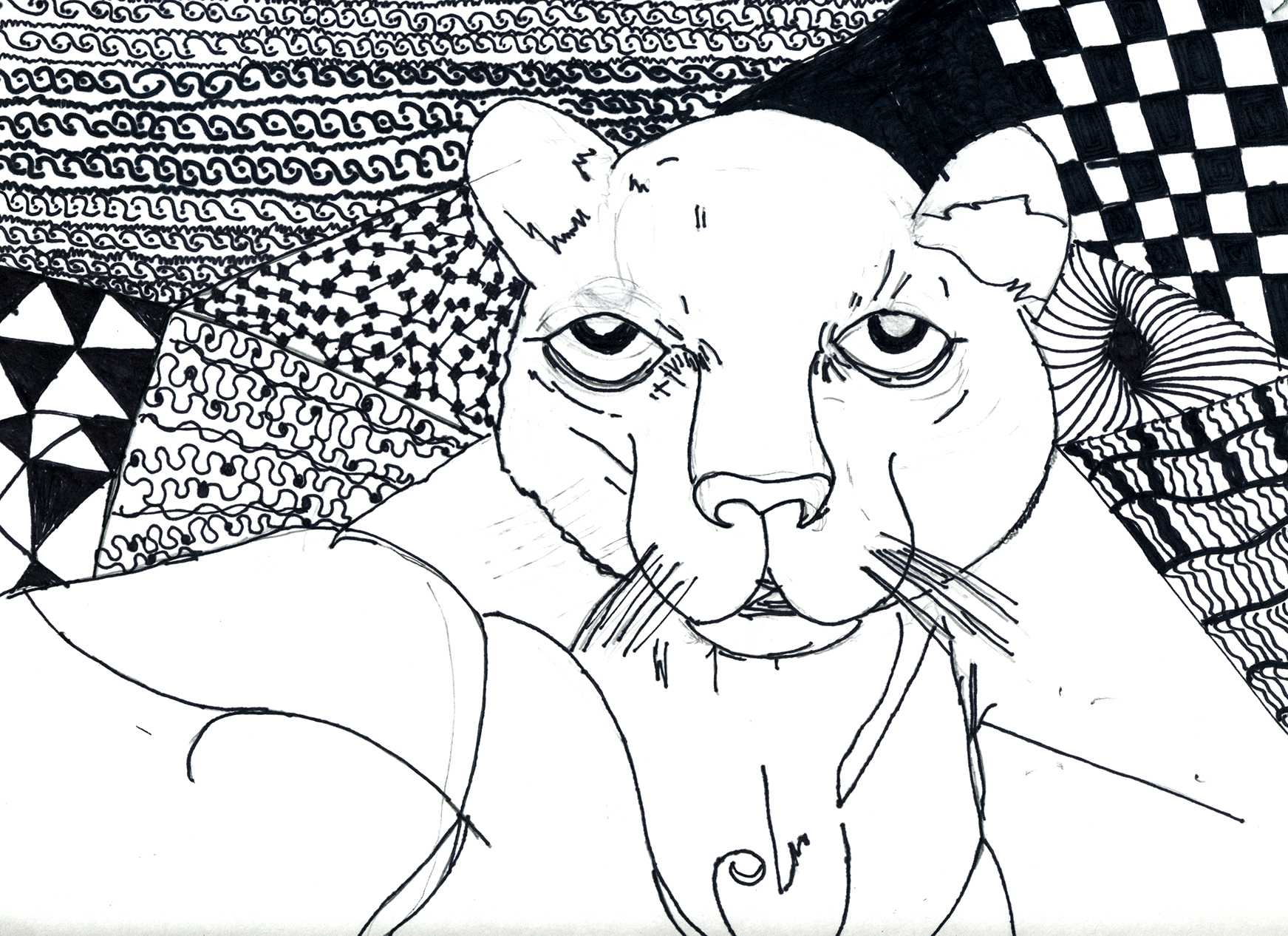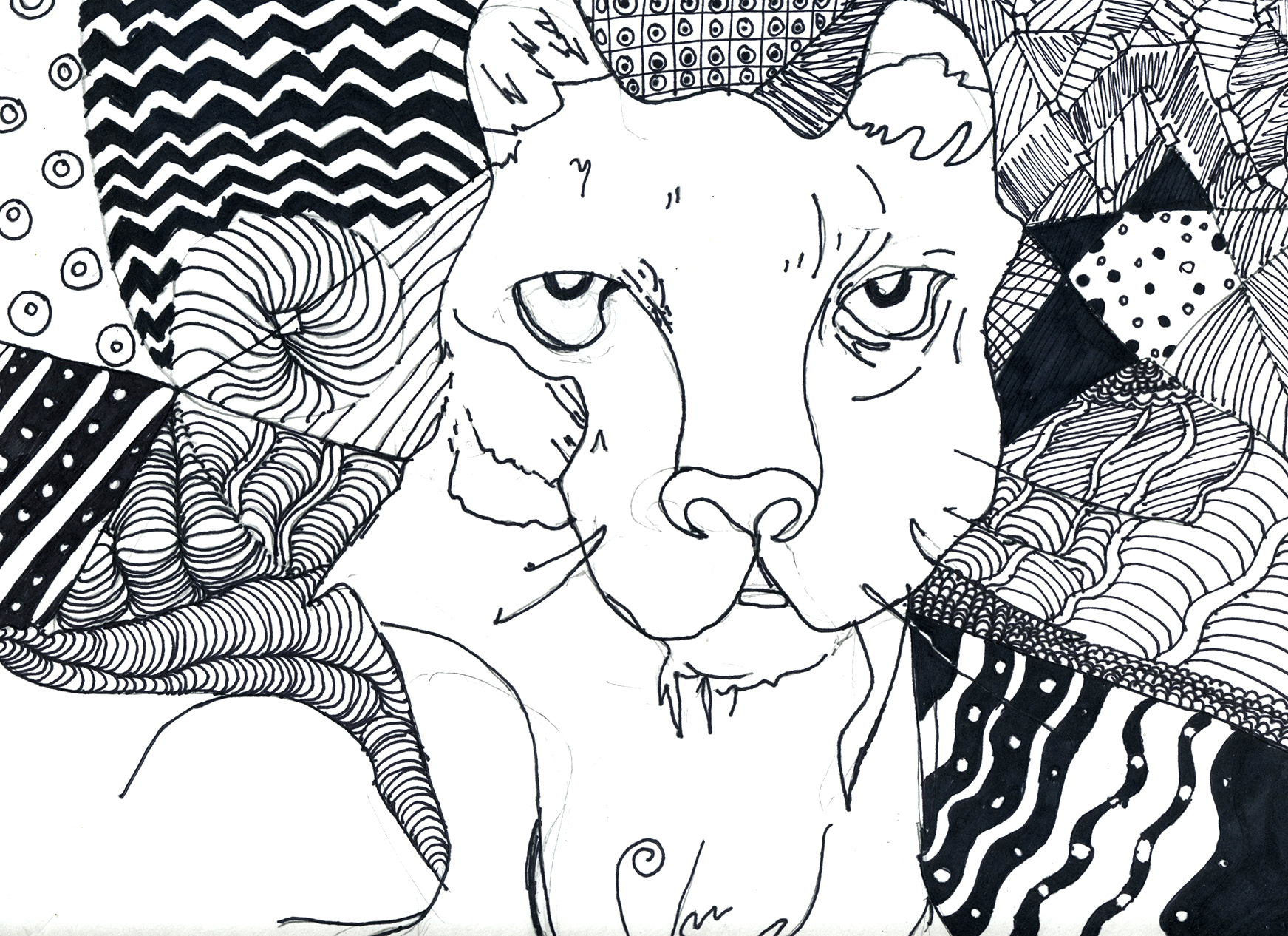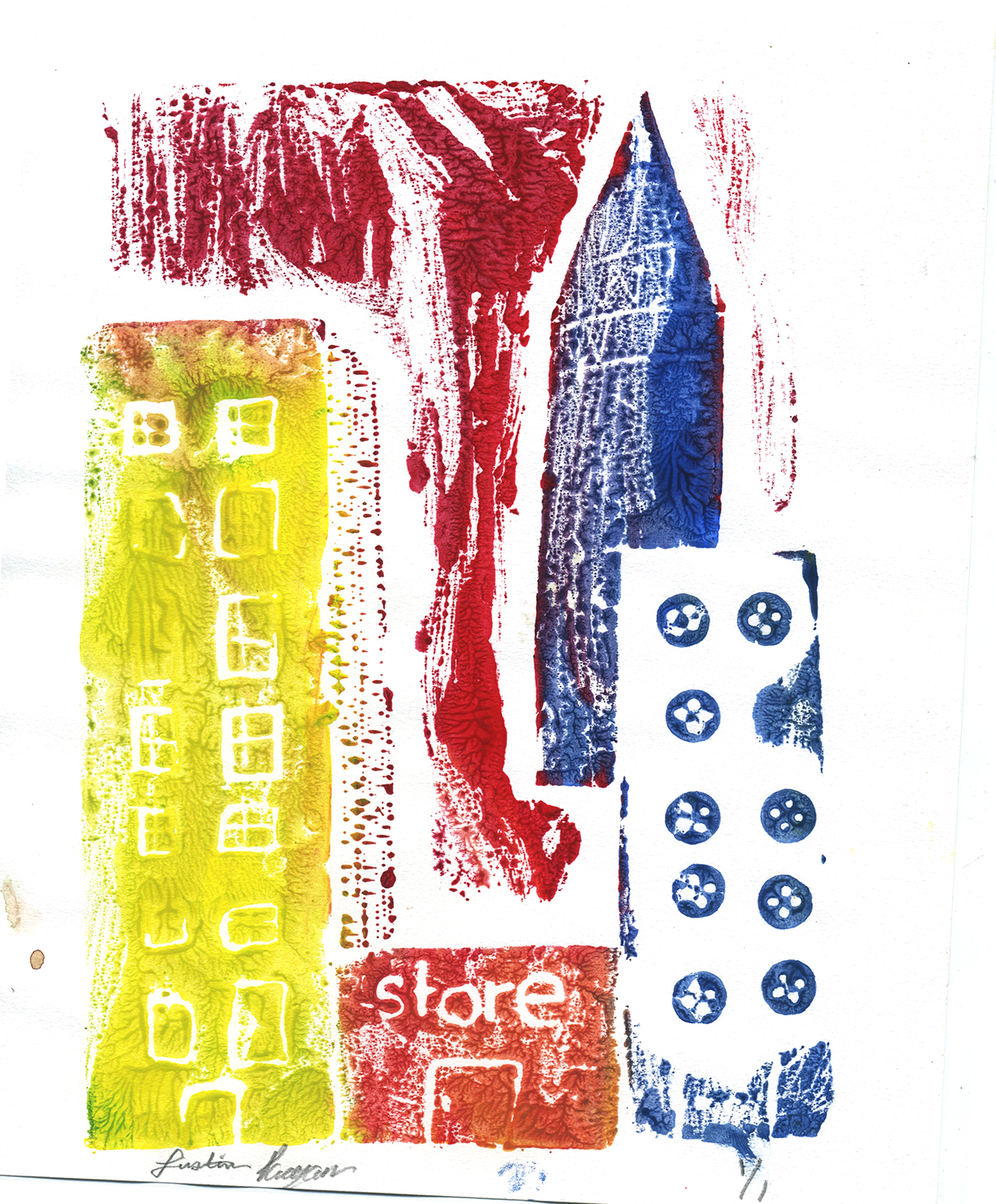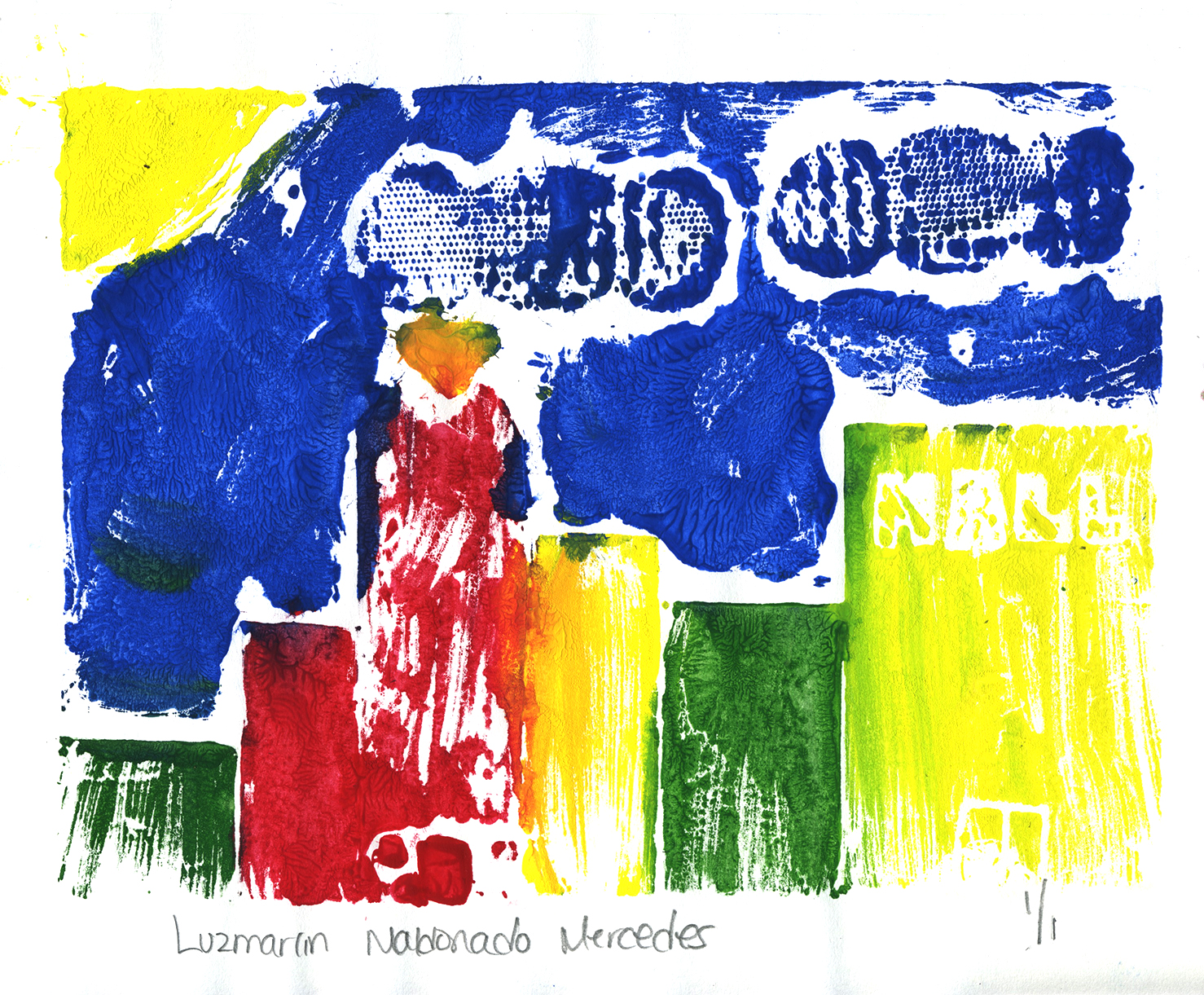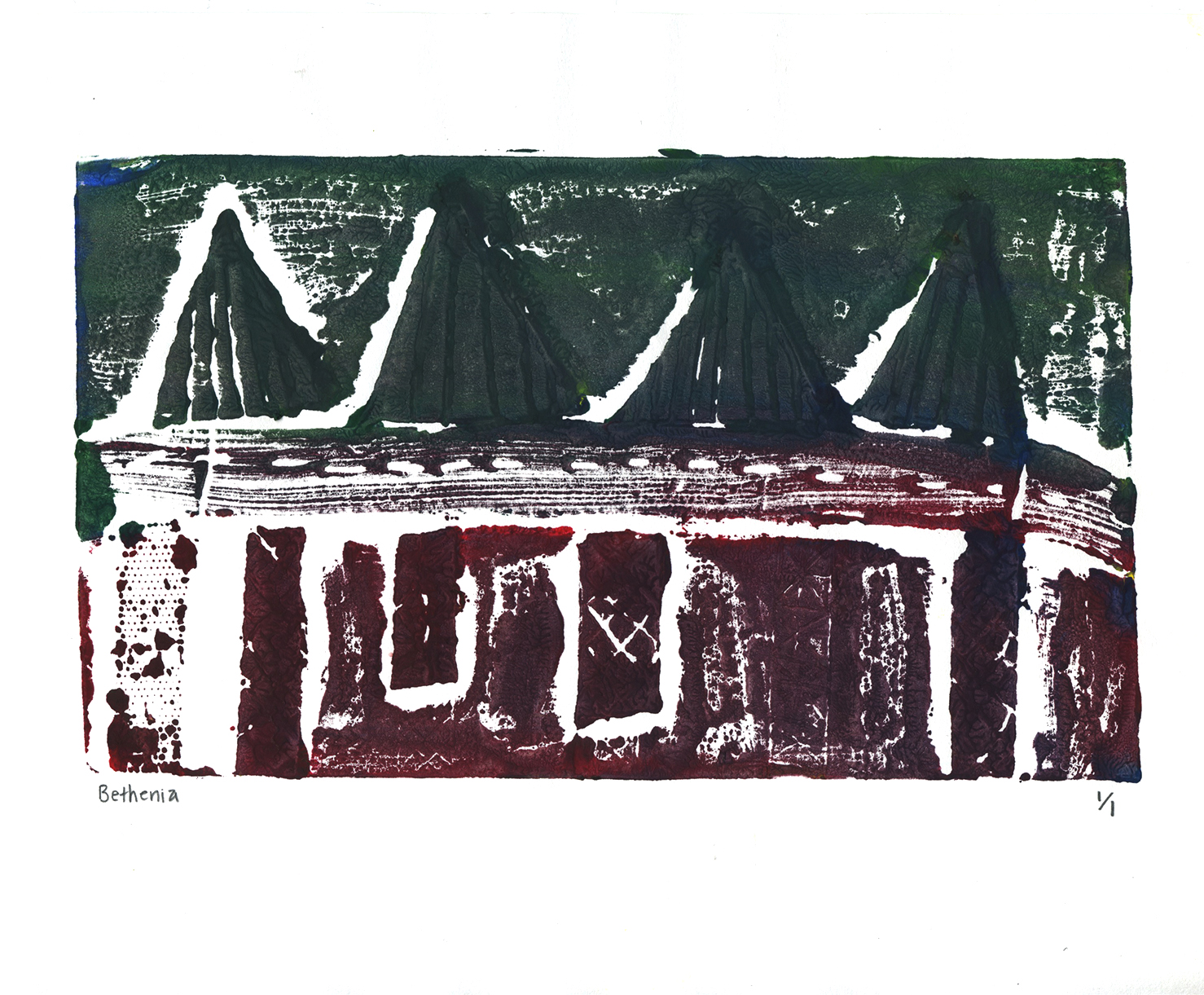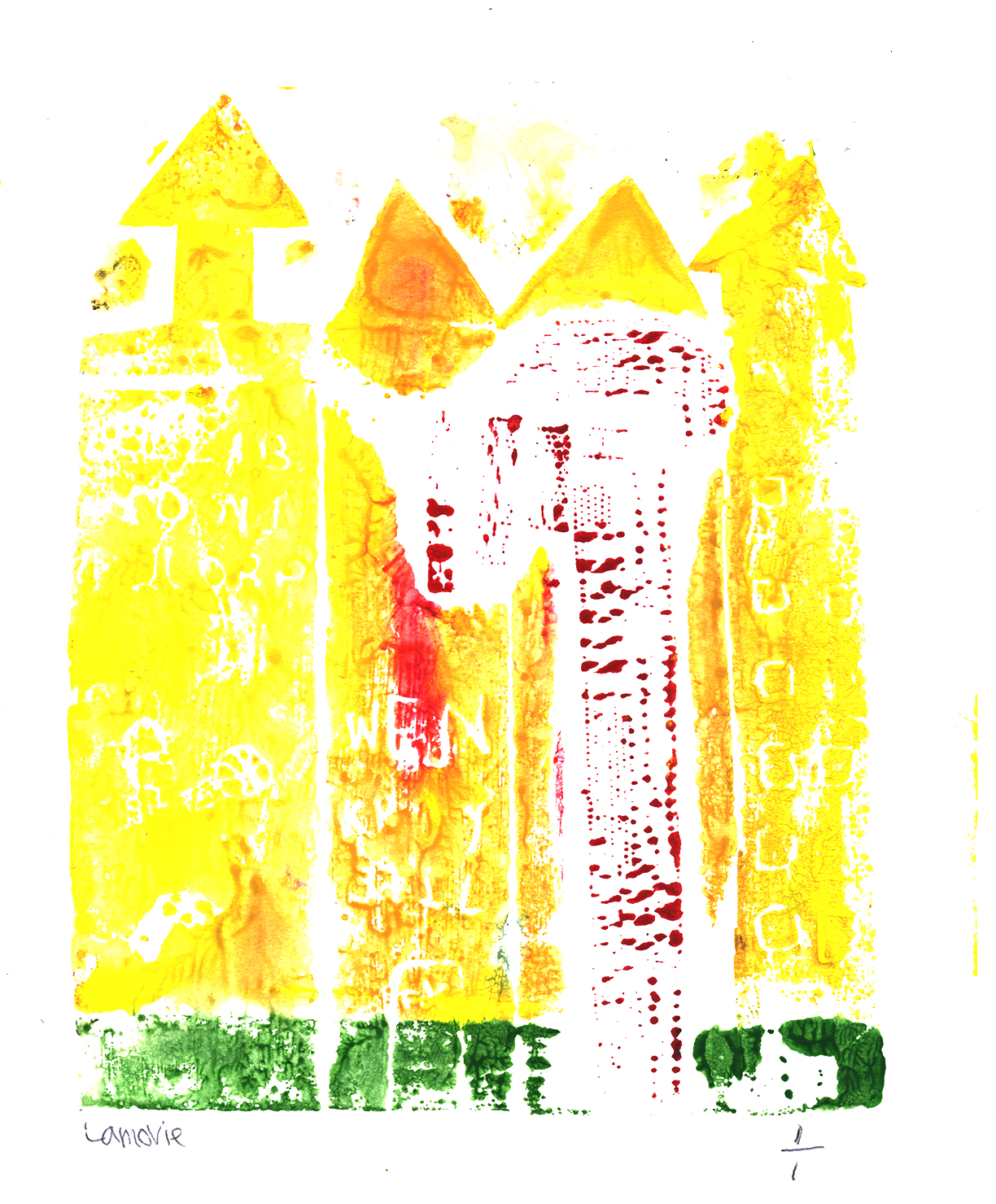Art Class
When not drawing pictures I spend the vast majority of my time and energy working with the brilliant young artists of Unity Preparatory Charter School of Brooklyn. Through an exploration of the elements of art and the principals of design, these 6th graders have tackled a range of materials and approaches. It's amazing how many children have decided that they are "bad at art" by age 10 or 11. I push students to explore their relationships with "failure" and then to use art to build the creative confidence required to turn mistakes into something beautiful and meaningful.
Drawing In Class
When I was in school I would get in trouble for drawing during class. I would try to explain to my teachers that I was actually taking visual notes, but they were skeptical. Turns out the joke is on them! Below are the graphic instructions that I made for several of the projects we've done this year. I've found that the presenting instructions in a form that students are familiar with (comics and graphic novels) generates interest and excitement about learning process and procedures.
Still Life
The Still Life project was one of my favorite. The students spent weeks learning about shape, form and value through a series of mini exercises. They became confident with willow charcoal, compressed charcoal sticks, and charcoal pencils as well as a variety of paper types. For the final showcase of their studies students drew from still life sets-up. They were challenged to view themselves as artistic investigators, collecting information on how the objects related to each other, where the light sources were and how these and many other factors come together to make a scene. Because students drew from natural light over several days, they had to adapt to the subtle changes of their not so still life.
Logo Prints
The Logo prints turned out to be really fun and expressive project for the students. We learned about branding and typography while brainstorming how to use a wit and design to summarize our personalities. Students then used scratch foam and block printing ink to make their prints.
Zentangles
At the beginning of the school year I noticed that a majority of students were very uncomfortable with their drawing abilities and true to their developmental stage were obsessed with representational drawing as the only way to be “good” at art. Enter the Zentangle Panther. Pulling from the research of Drawing on the Right Side of the Brain, students learned about the difference between left and right brain processing and the disconnect that can happen when our brain moves faster then our hands. Look slow, draw fast became a classroom motto. Students completed panther drawings by following along upside down to a template drawing. This process tricked their brain and allowing their hand to translate exactly what they saw, rather then what they thought it should look like. Once finished students used their knowledge of pattern, line, and value to create unique Zentangles.
Collograph Prints
Students explored texture, color, and process through creation of Collograph Prints. We used mind maps to generate ideas around the theme of “MY NYC” – my hope was for students to explore what made New York City theirs and then figure out how to use texture and color to bring their experiences to life. Students then created paper collage “sketches” to plan their compositions using the same general approach they were to create their printing plate. We used all sorts of materials to create our collagraph plates. With all the planning done students got to work prepping their plates – we used everything from feathers to wax to discarded zippers and paperclips. Finally, students pulled several monoprints of their plate.
